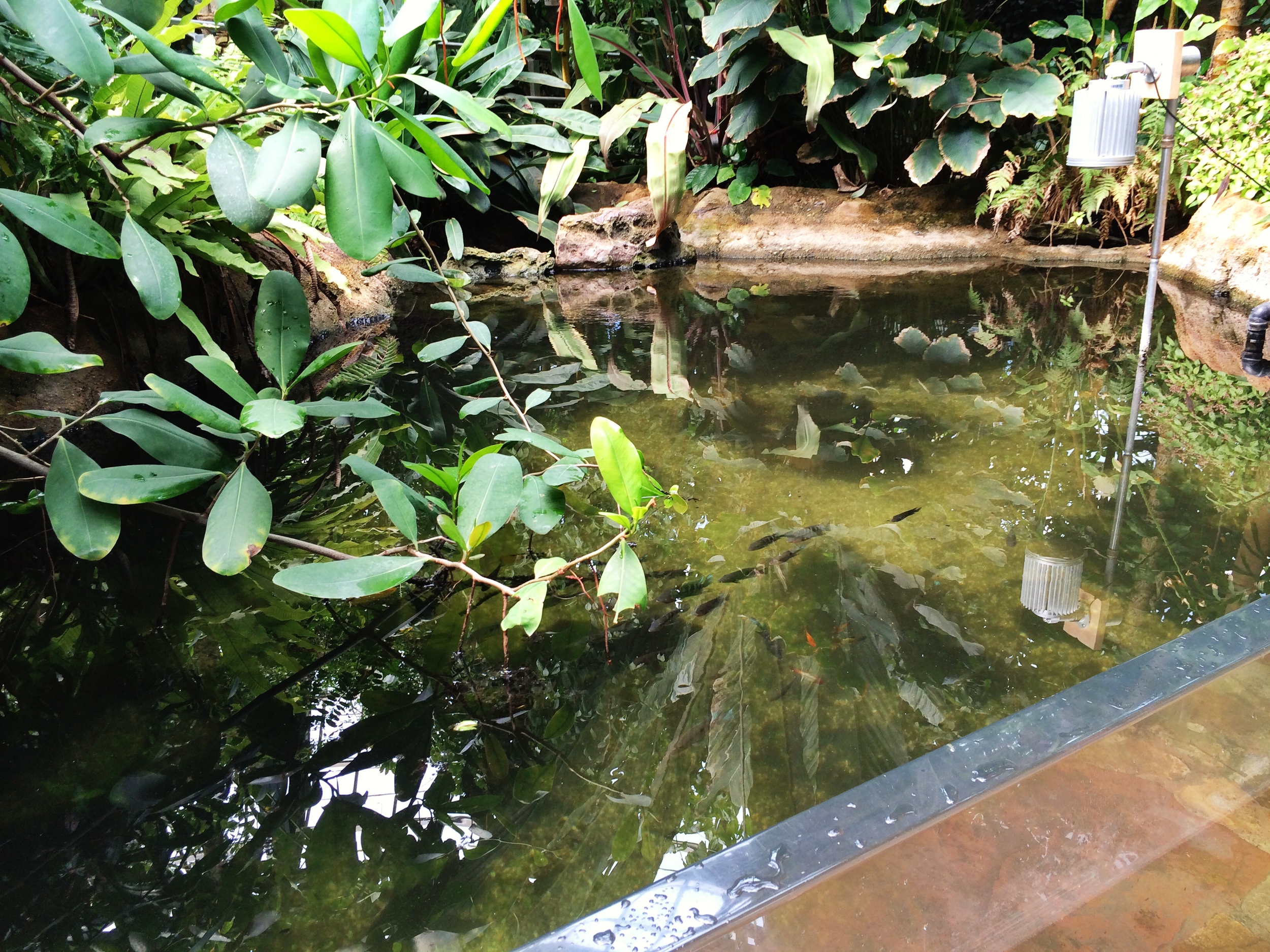

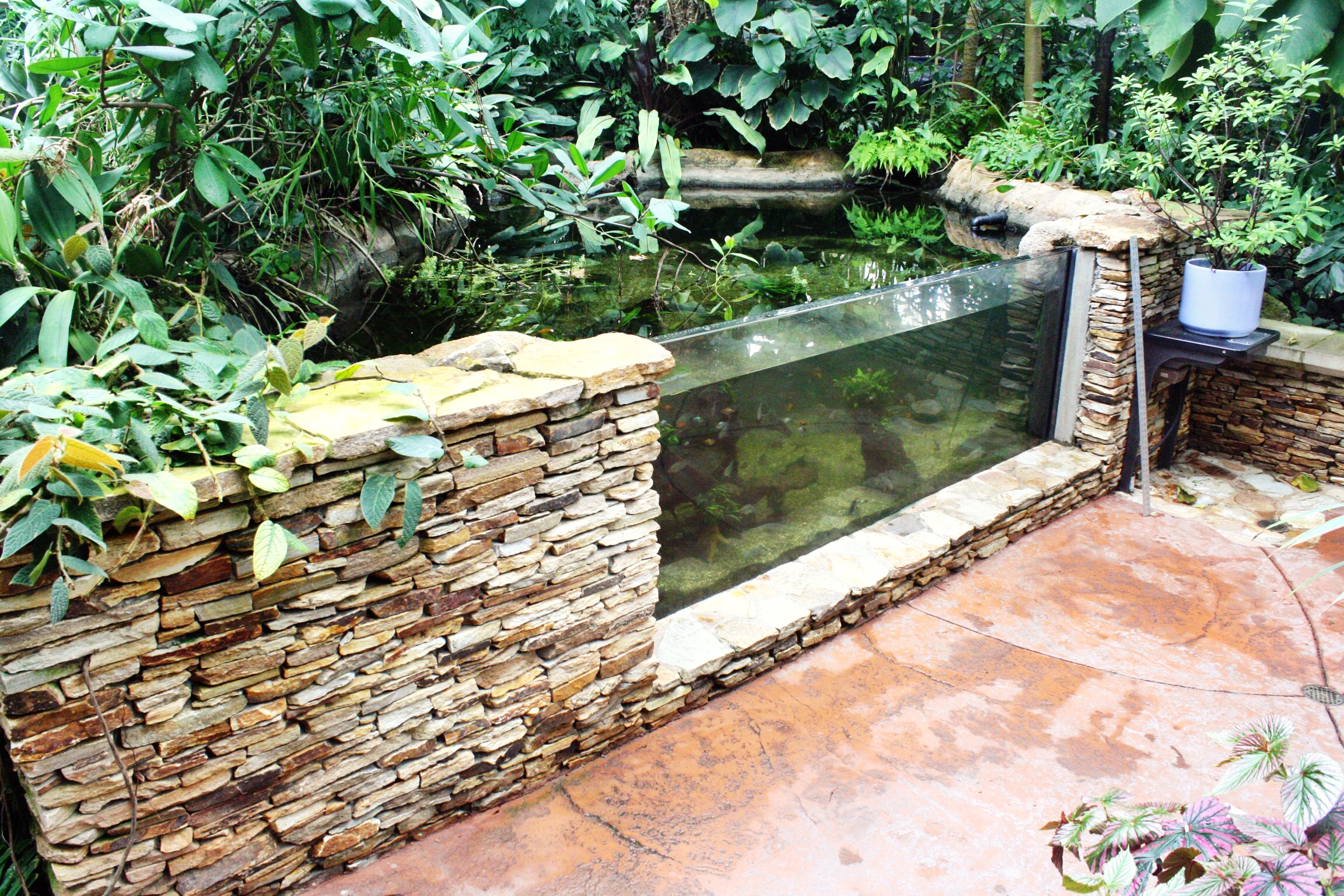
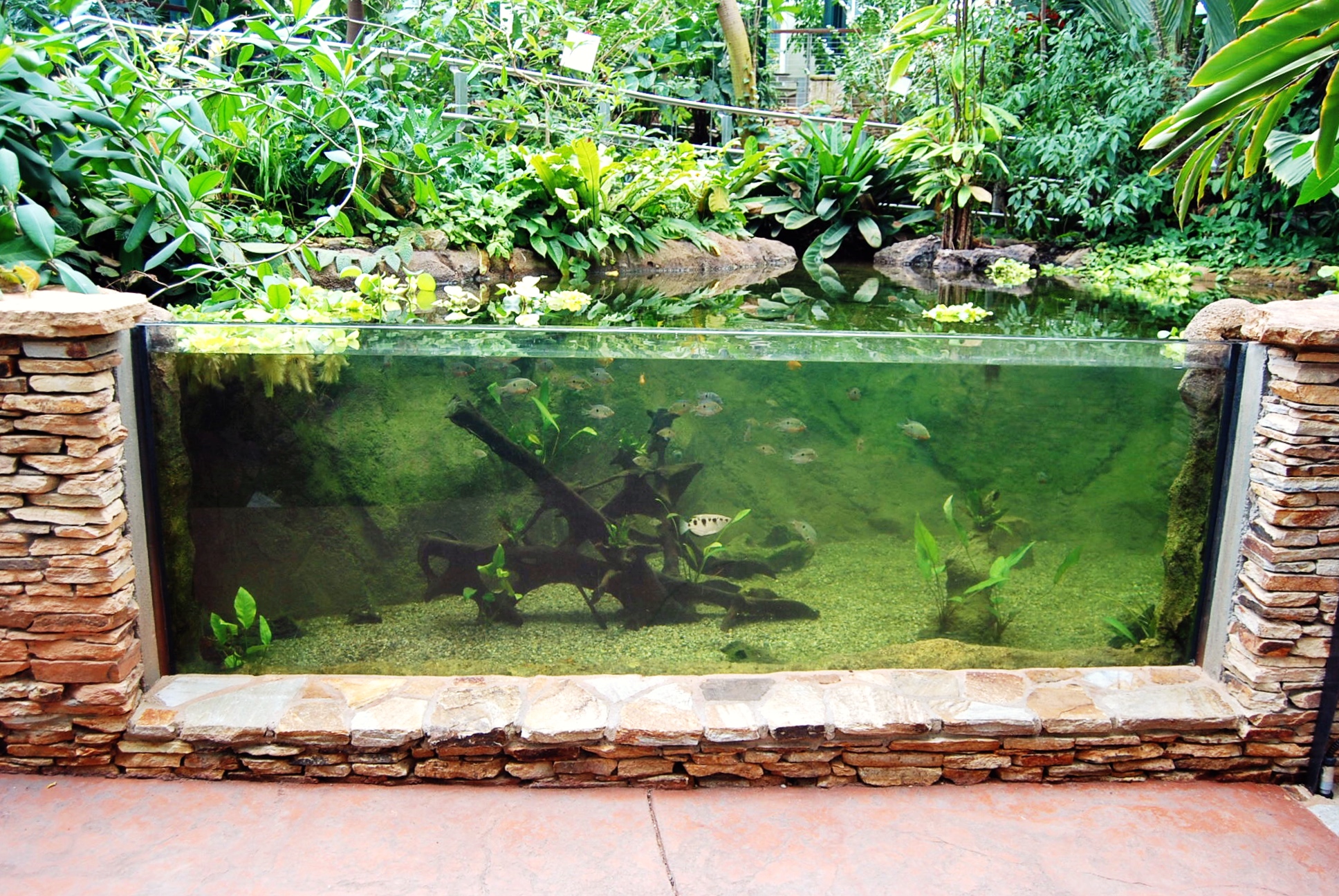
5000 gallon conservatory: Refreshing Freshwater
Back in January 2013 The Huntington Library in Pasadena, CA was interested in renovating their 5000 gallon pond in Conservatory Rain Forest garden. The pond was maintained to a certain extent, as it did not really have much going on to be maintained. There was a time where there was an attempt to grow the Victoria Giant Water Lily, but there was little success due to the constantly growing forest canopy that would limit the amount of light reaching the pond. The pond was never used for any other aesthetic besides tropical fish. A piece of driftwood was at the bottom of the pond, but it didn’t add much character due to the large space it was in.
The Conservatory is a beautiful glass building and the plants grow utilizing the natural light provided throughout the day by the sun. The pond resides in the center of this garden thus getting most of its light when the sun is directly over the Conservatory. The pond structure was installed a number of years ago and wasn't going to be touched, but the filtration system and the interior aesthetic called for a refresh. The pond itself was interesting as it was partially above ground and had a 2 inch thick viewing glass which made this a unique project to redesign.
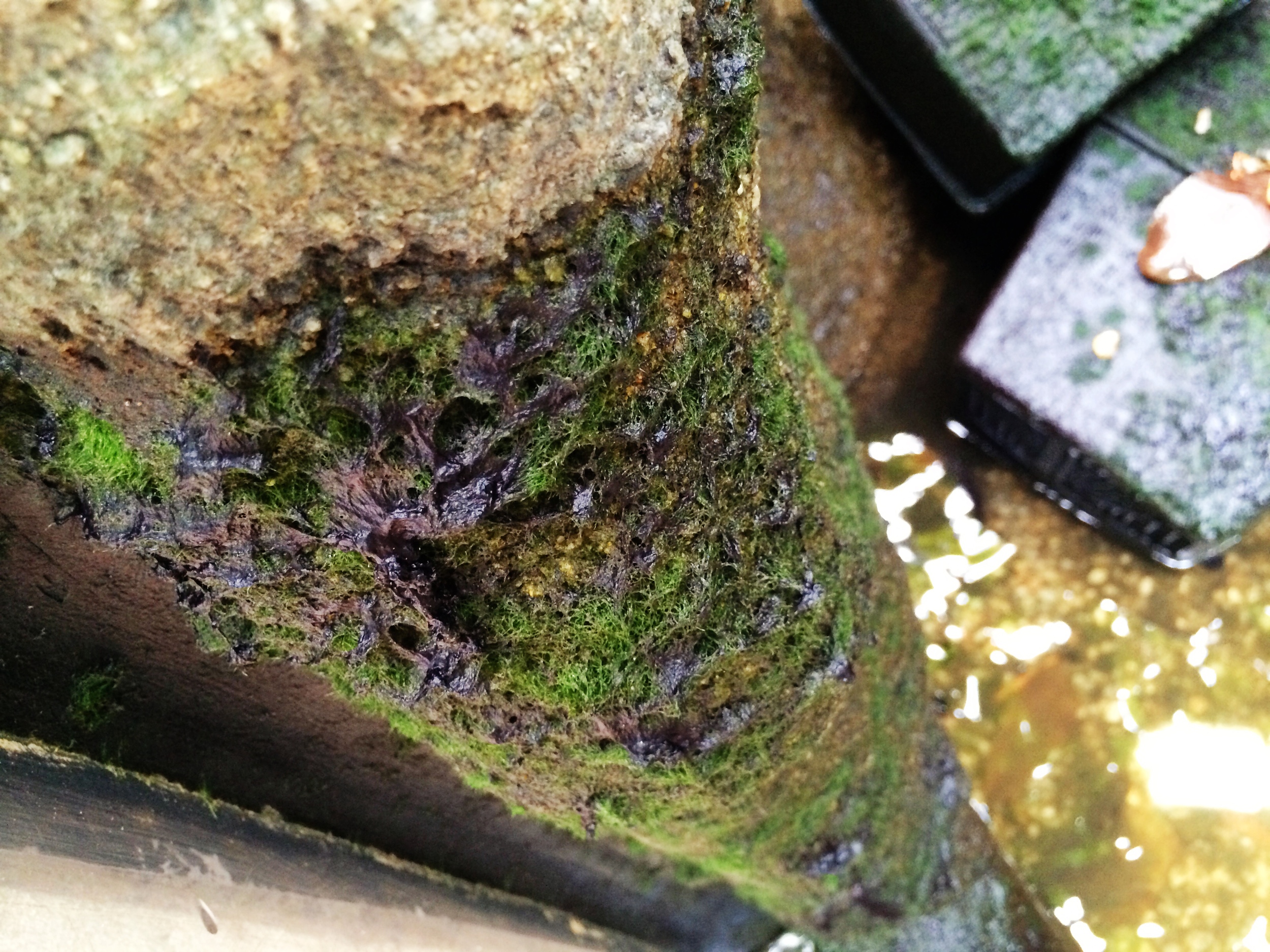
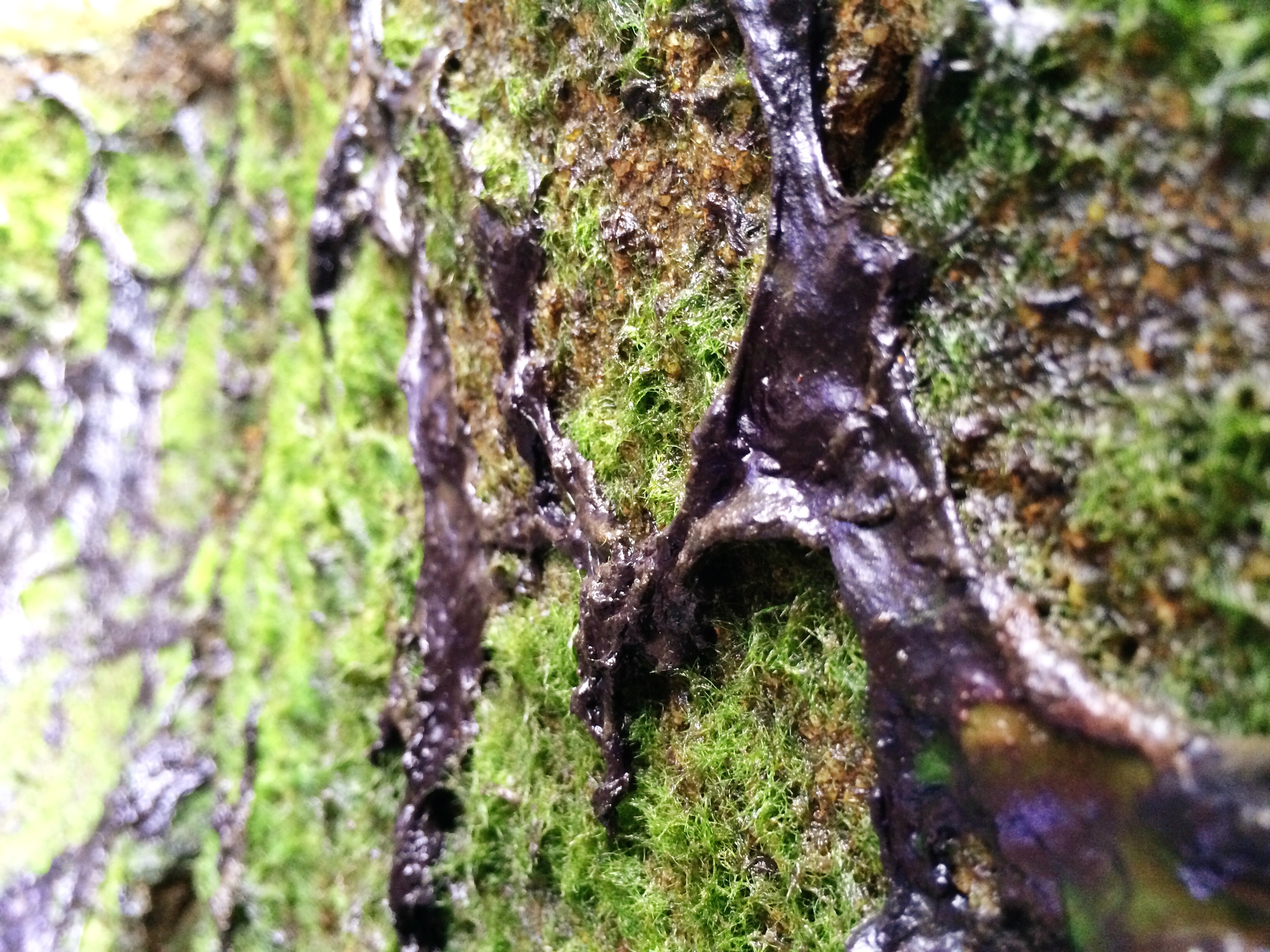
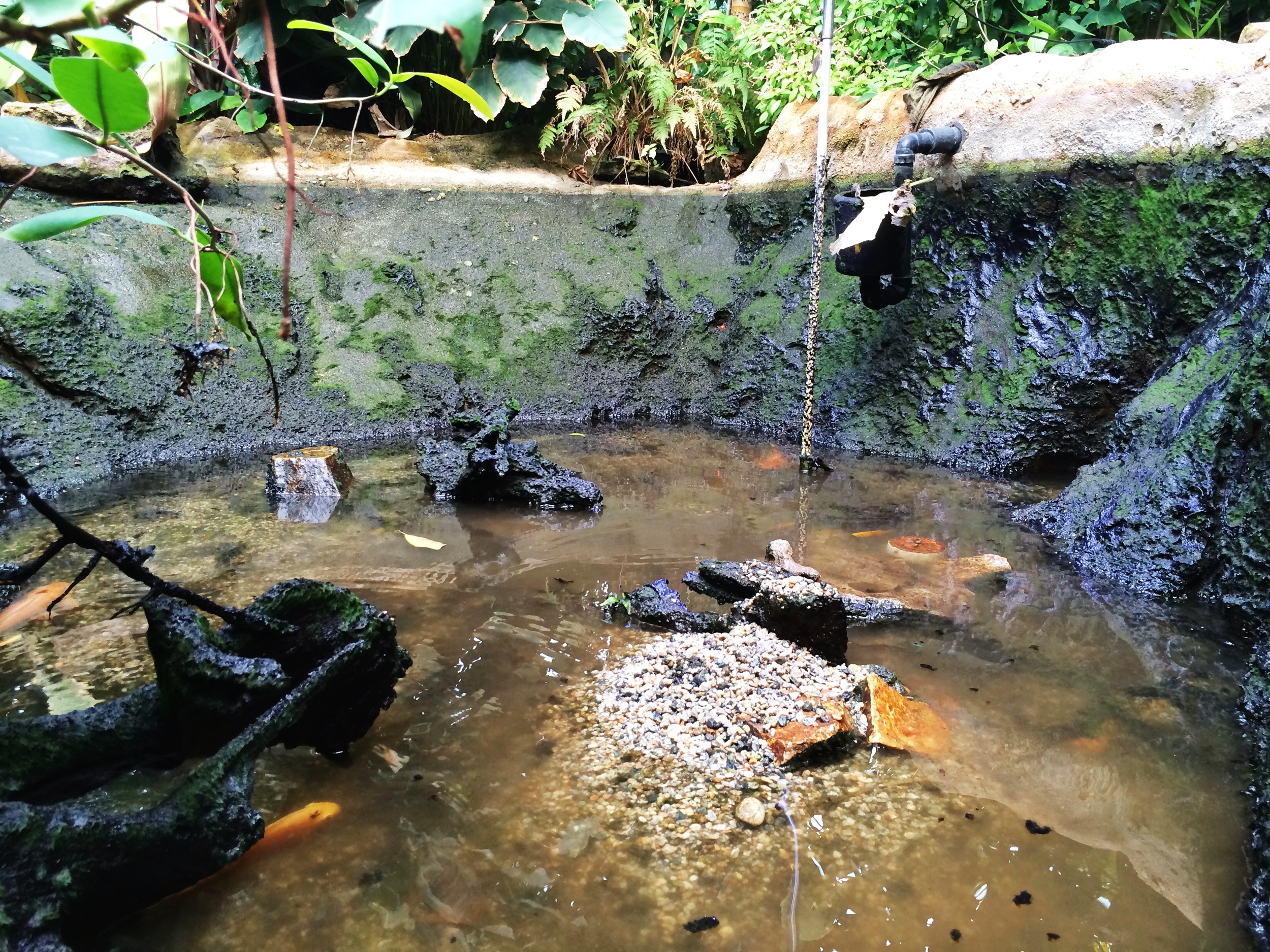
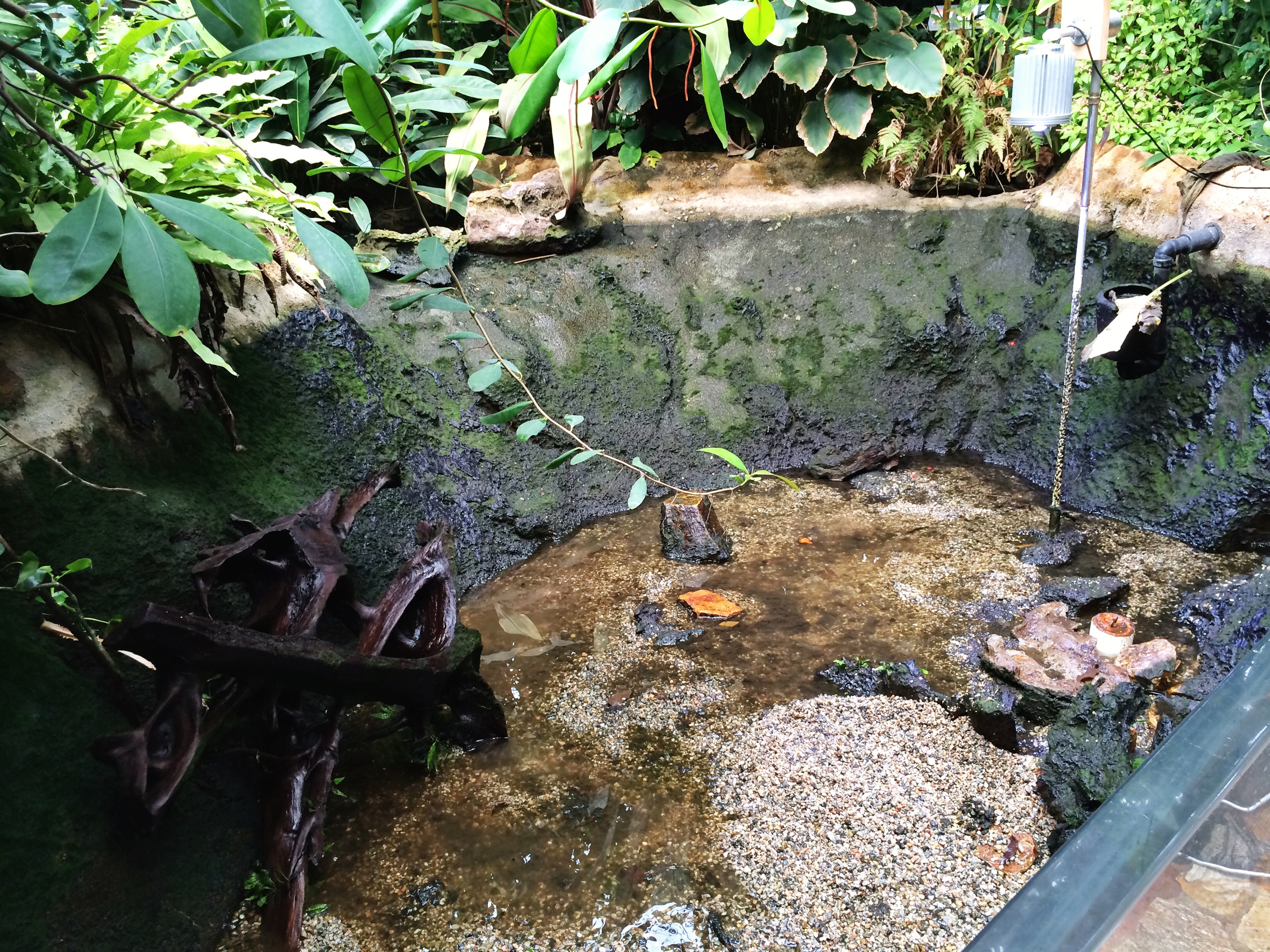
There were a few items on the system that needed to be addressed for a proper refresh. The pond was only filtered by a 20 gallon sand filter, which was far from adequate for supporting the bioload of a system this large. Also, the components of the filtration system were configured without maximizing efficiency for water pressure. The pond seemed to look evaporated majority of the time, and the aesthetic within the display was lacking of hardscape such as wood or rock. The appearances were improved upon with a simple top-off of water. There was a stark contrast between the amounts of foliage above the water to what was in the pond.
The pond refresh was approached in stages. The first was to empty the pond and perform a deep cleaning. The walls of the pond structure were completely covered in numerous types of algae, from brush and beard algae to thick black slime. A stainless steel brush could not remove the algae. The walls then underwent multiple treatments of bleach to help dissolve the algae. Over 300 square feet of algae needed to be pressure washed and removed manually. About two tons of gravel was manually removed as well, bin by bin.
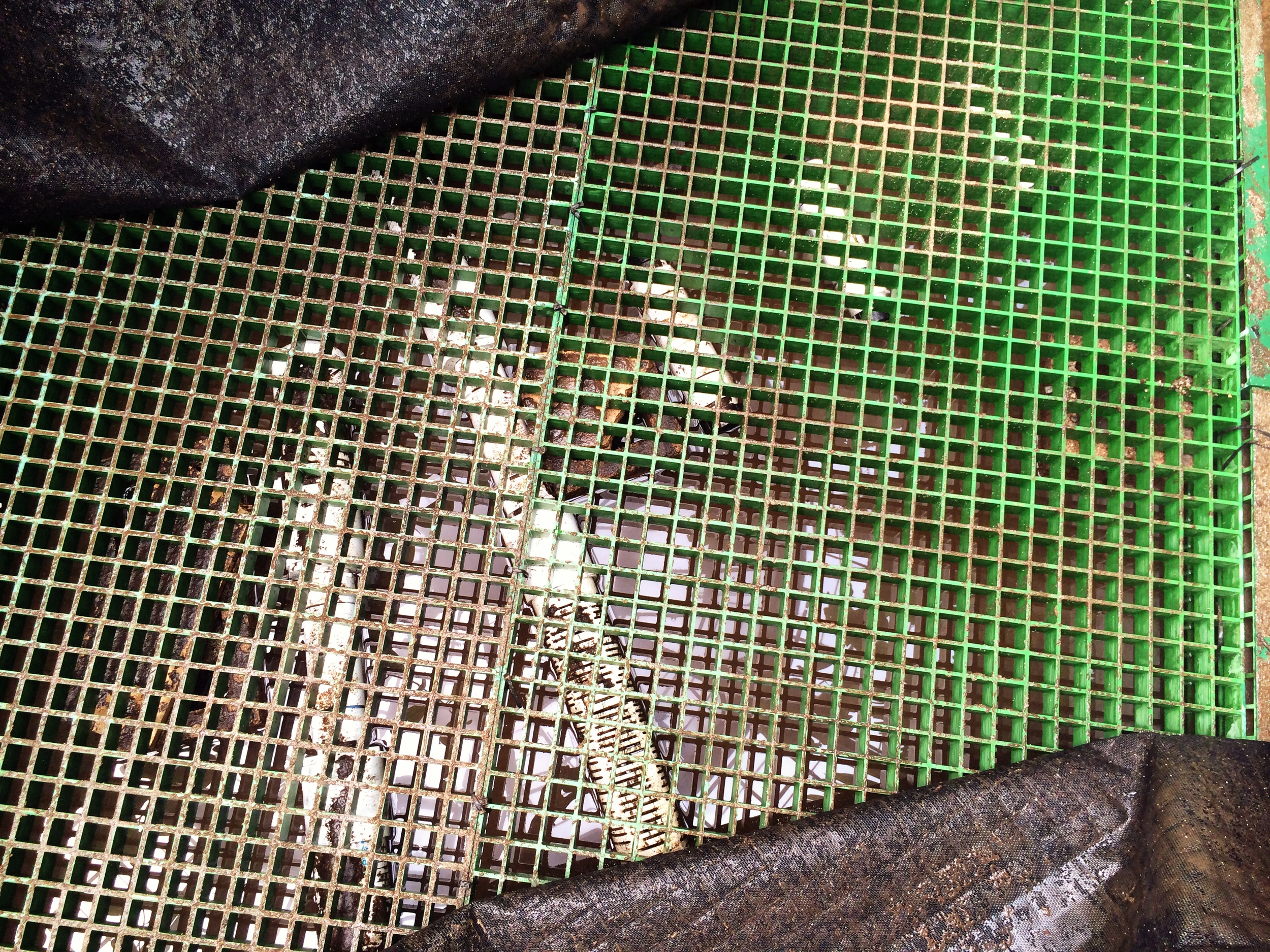
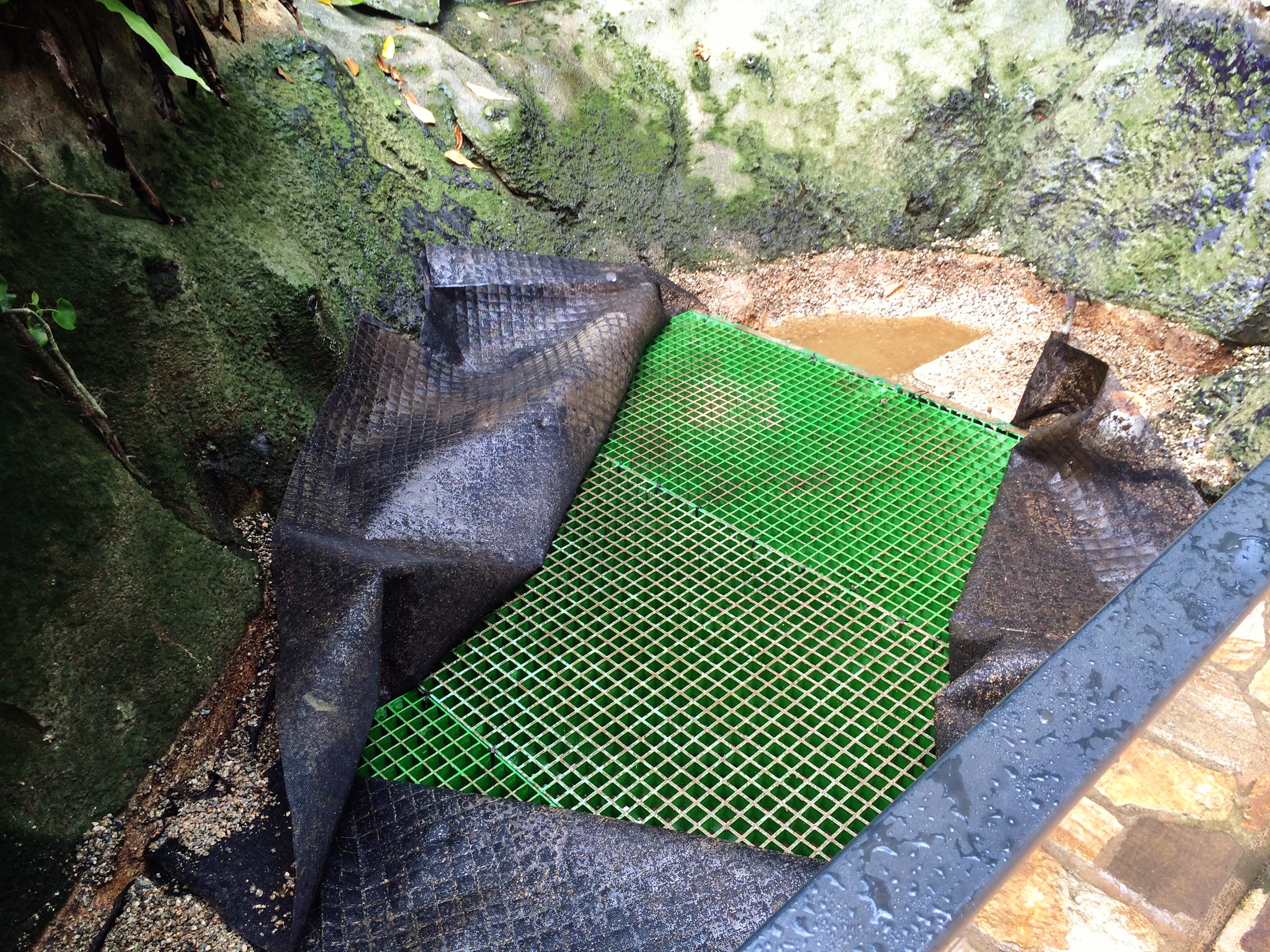
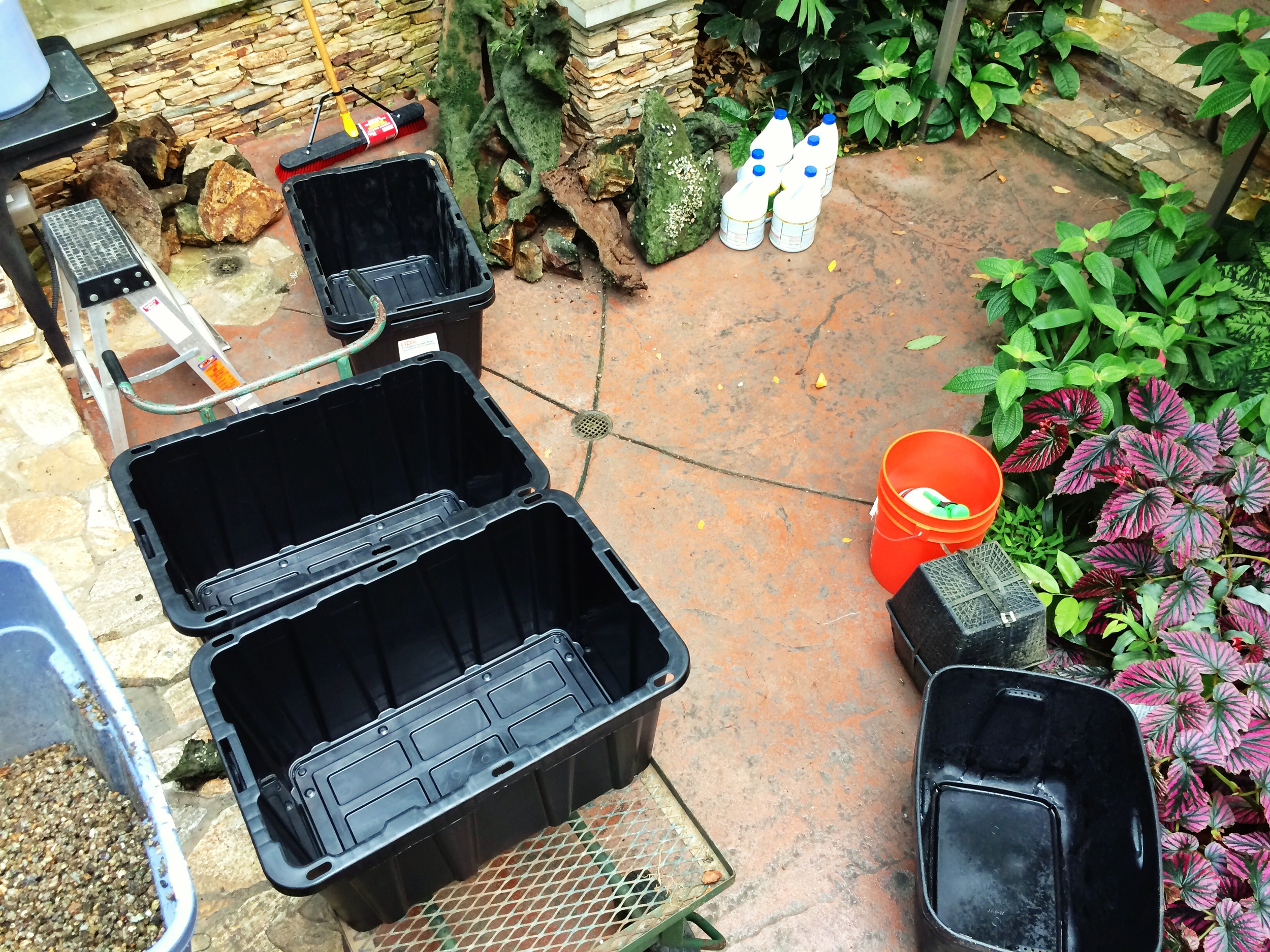
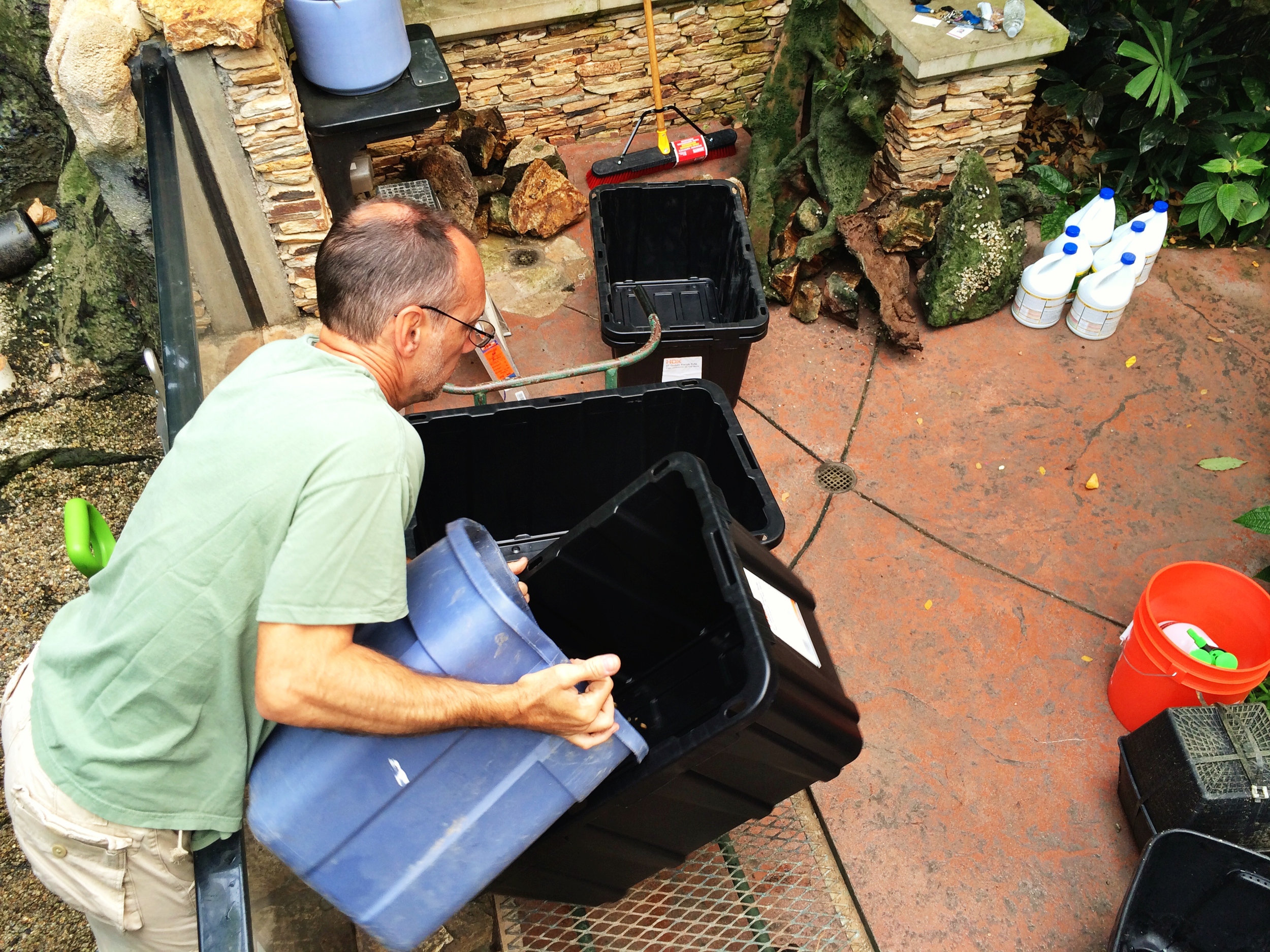
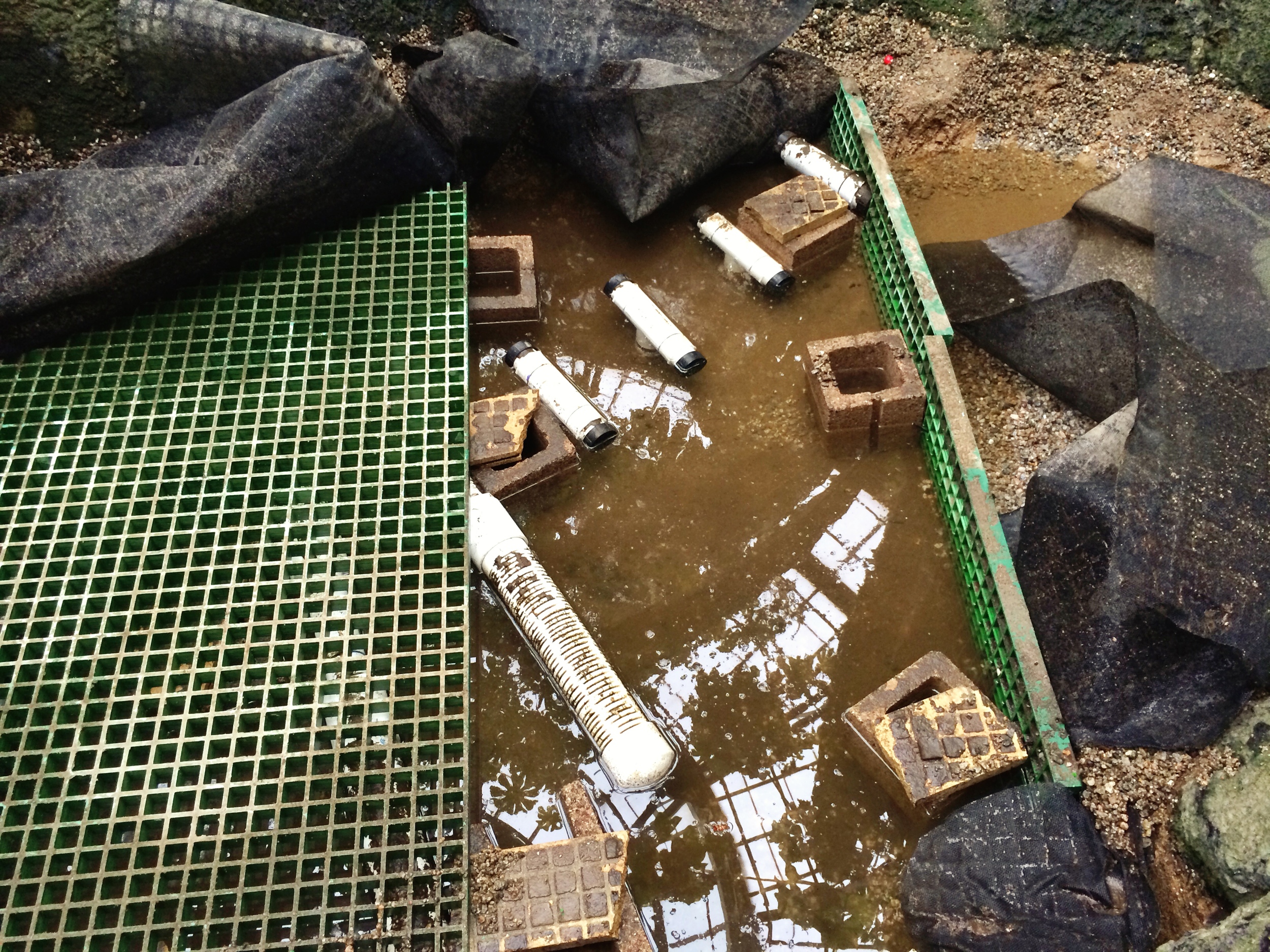
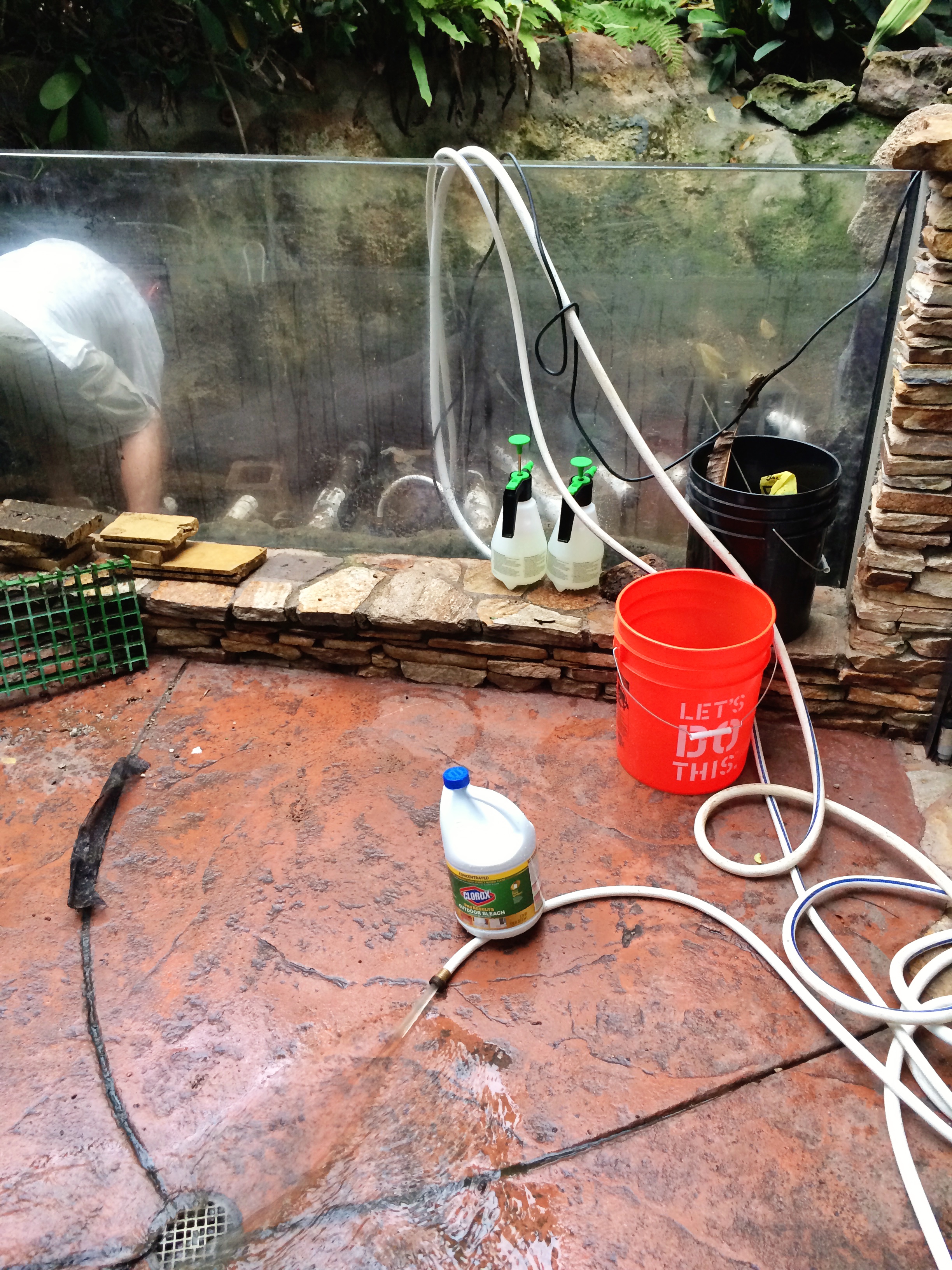

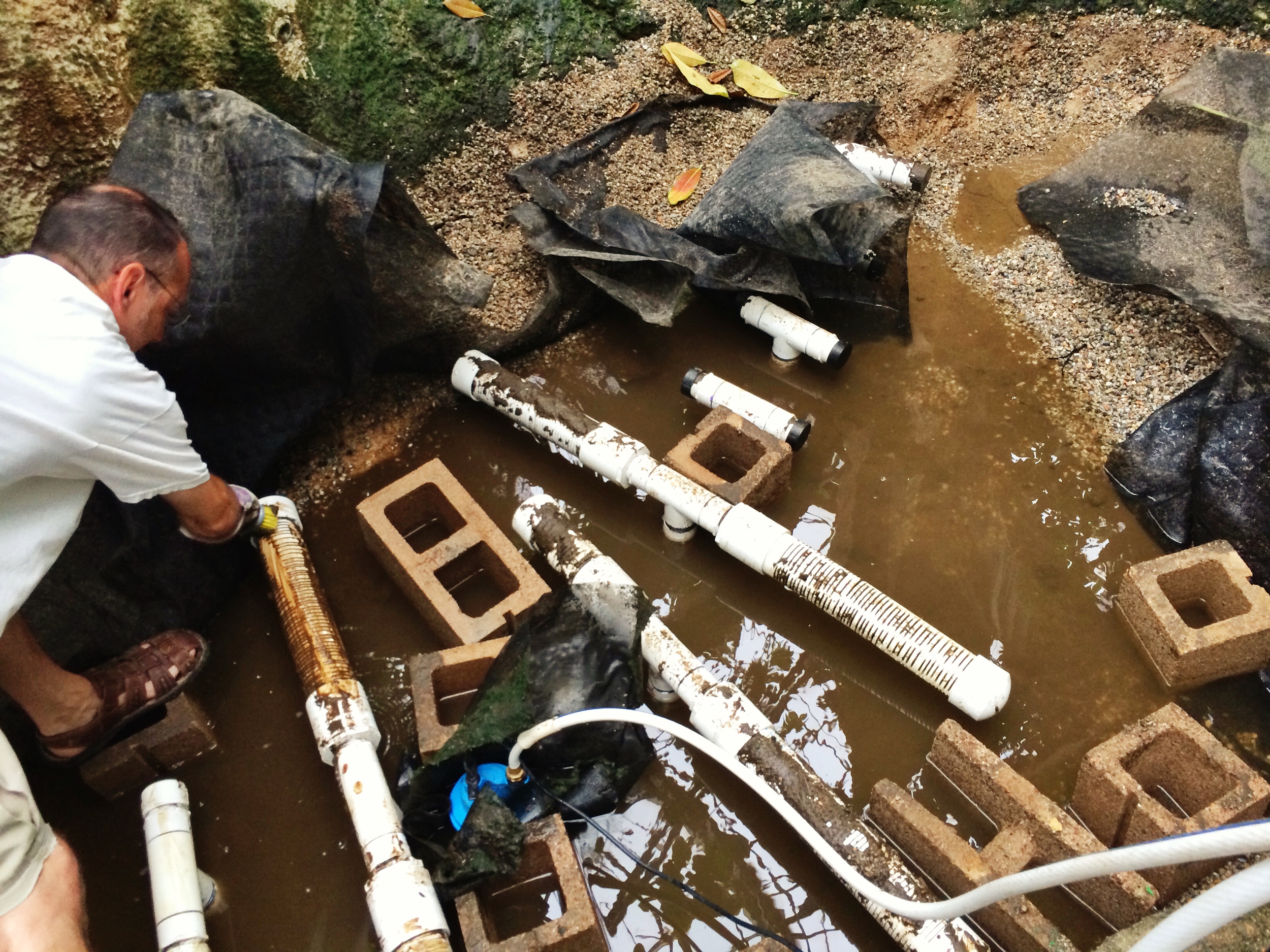
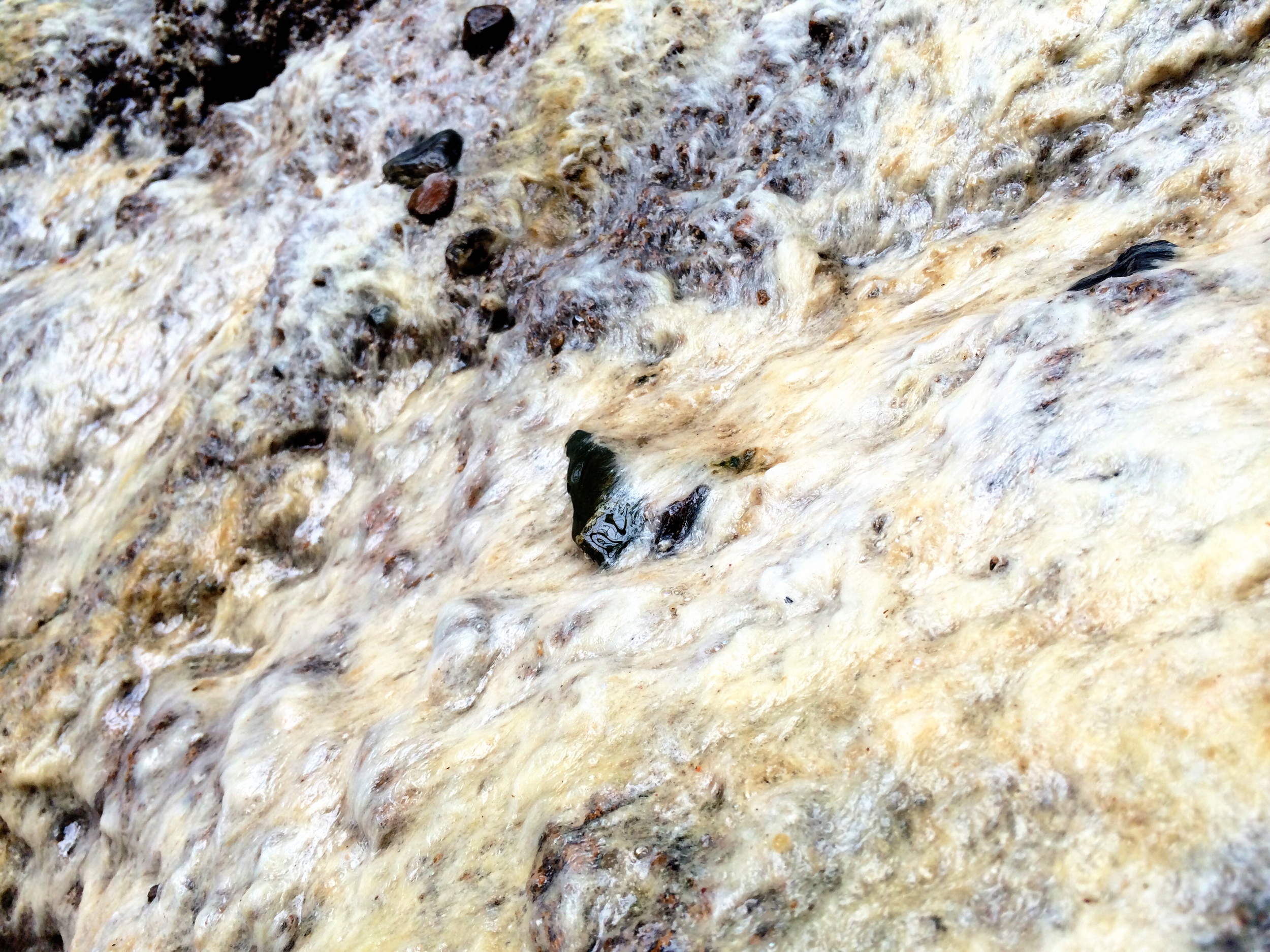
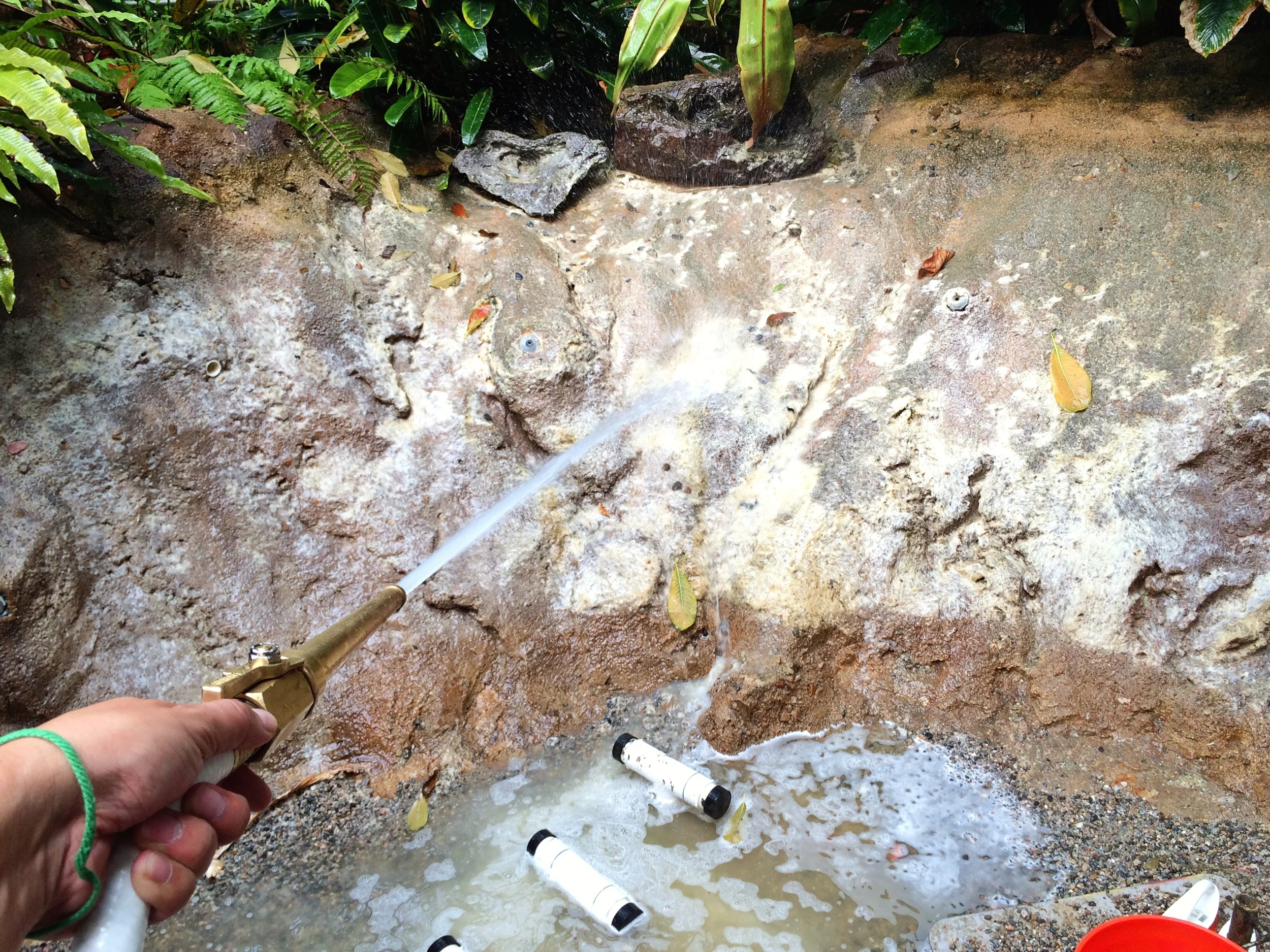
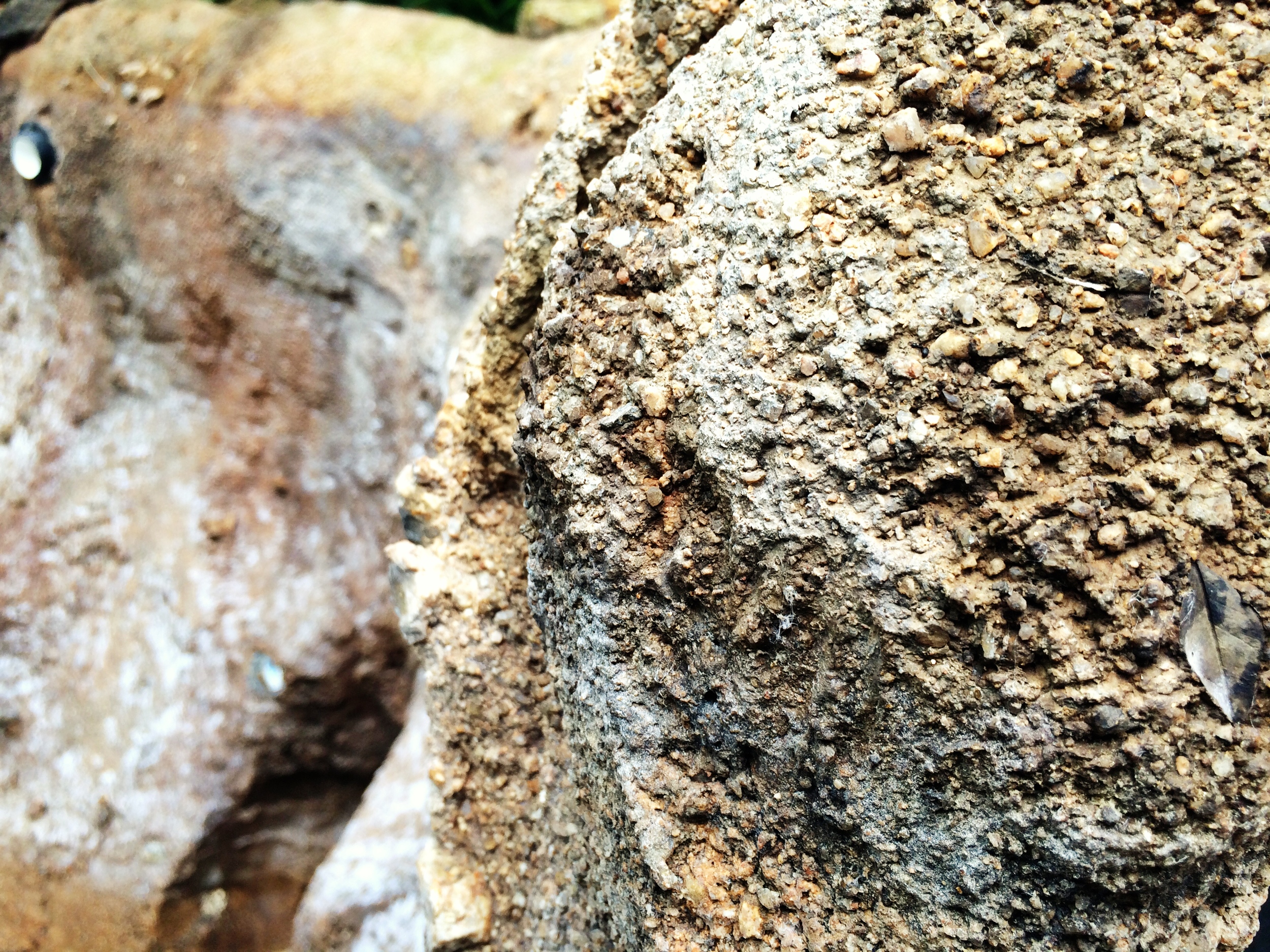
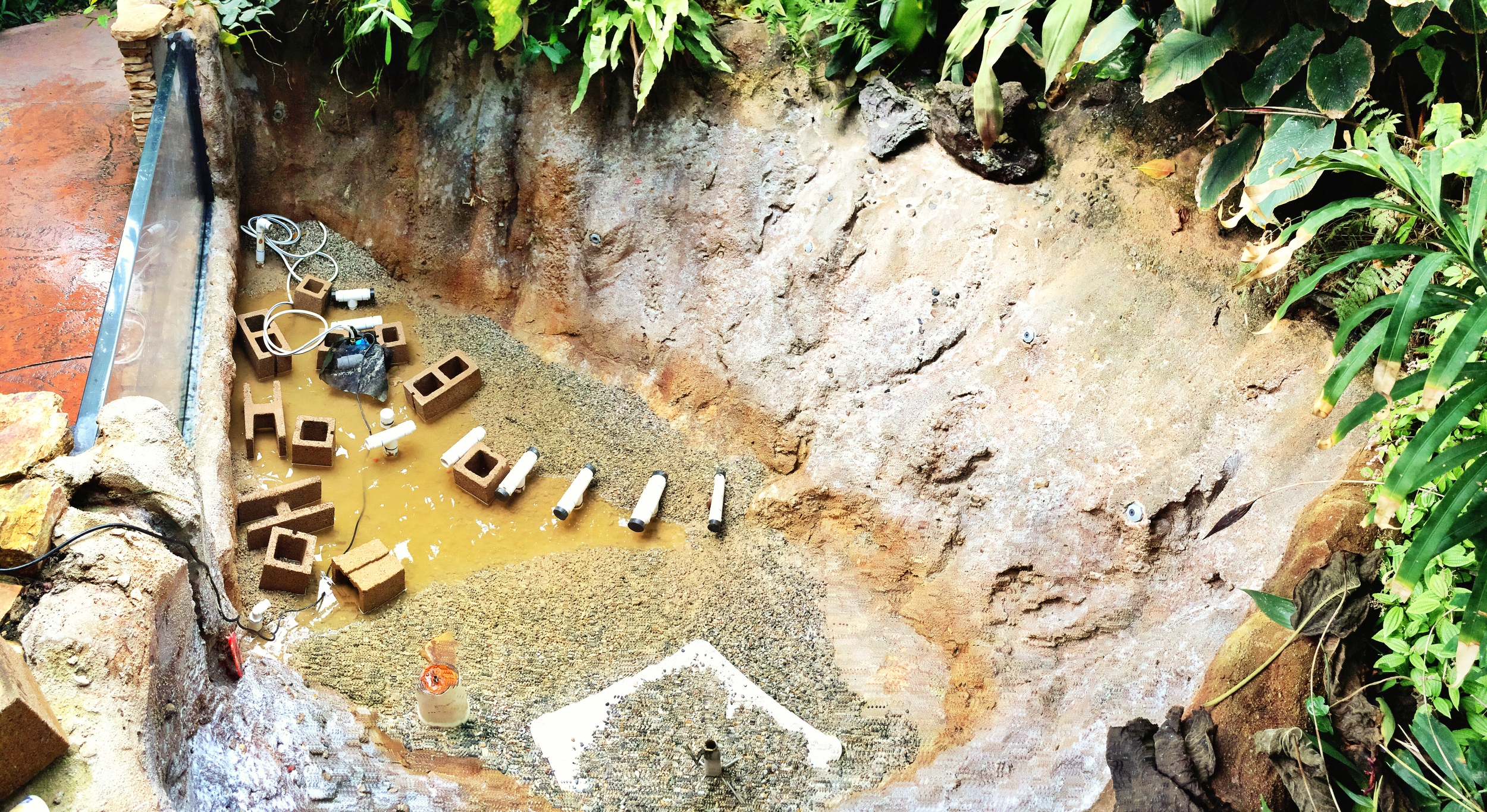
Underneath the gravel substrate laid fiber glass grating covering a network of slotted PVC pipe which served as the pond’s under gravel filtration system feed. The grating and all of the slotted pipe were removed as the filtration was to be redesigned completely and the under grave filtration was to be scrapped. Each PVC tee was connected to a single 2 inch line feeding to the equipment room where the filter resided. All but two tee’s were capped off and the filter feed was to be moved from the floor of the pond to the water surface.
This was a grueling process as there was no simple way of removing the substrate. The gravel had to be removed manually by shoveling buckets upon buckets from the pond to the outside. Then each bucket was to be transported from the pond to outside the facilities for cleaning. This phase of the project took about a week to complete just to get to the bottom surface so that modifications to the PVC piping could begin.
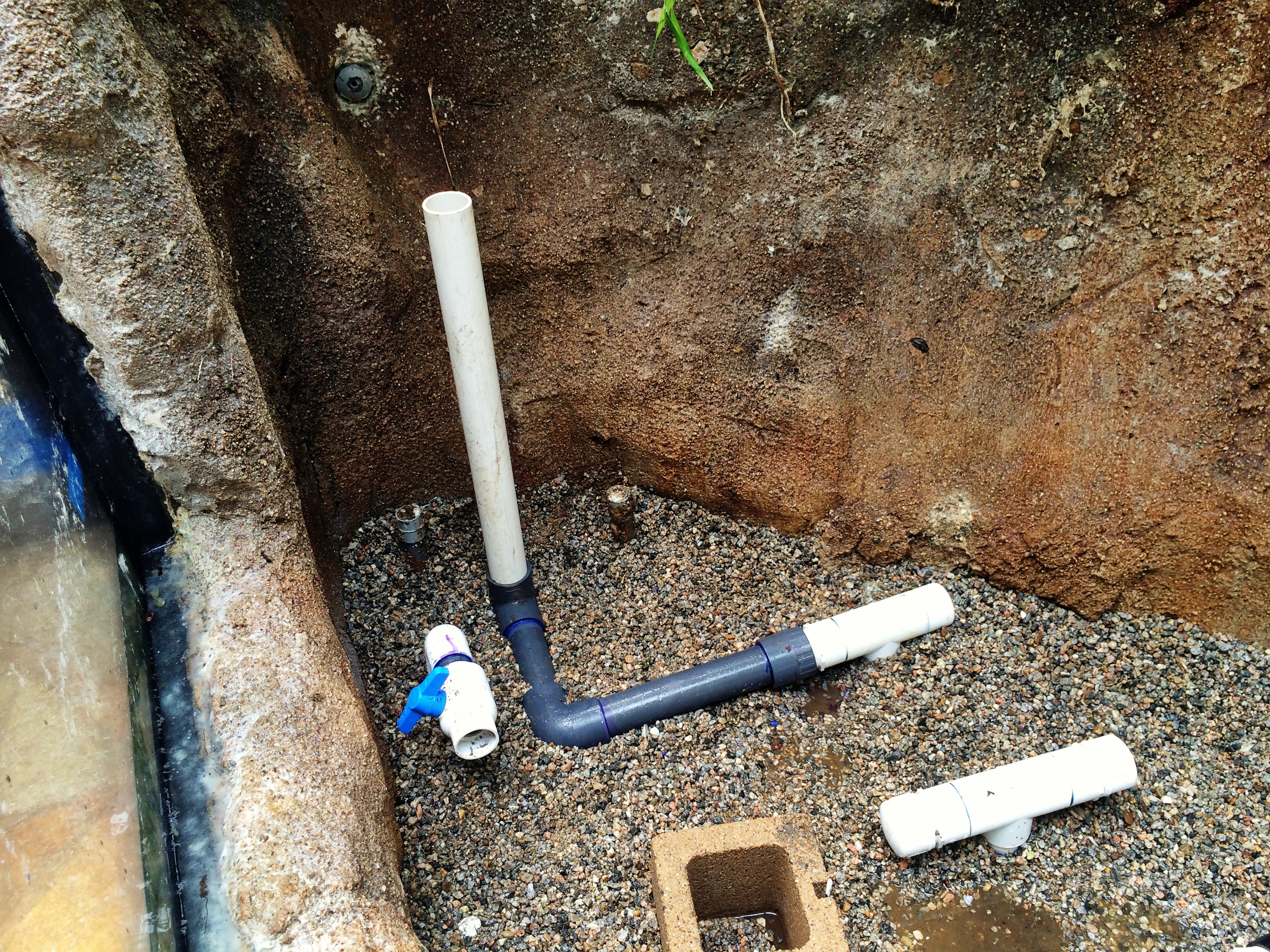

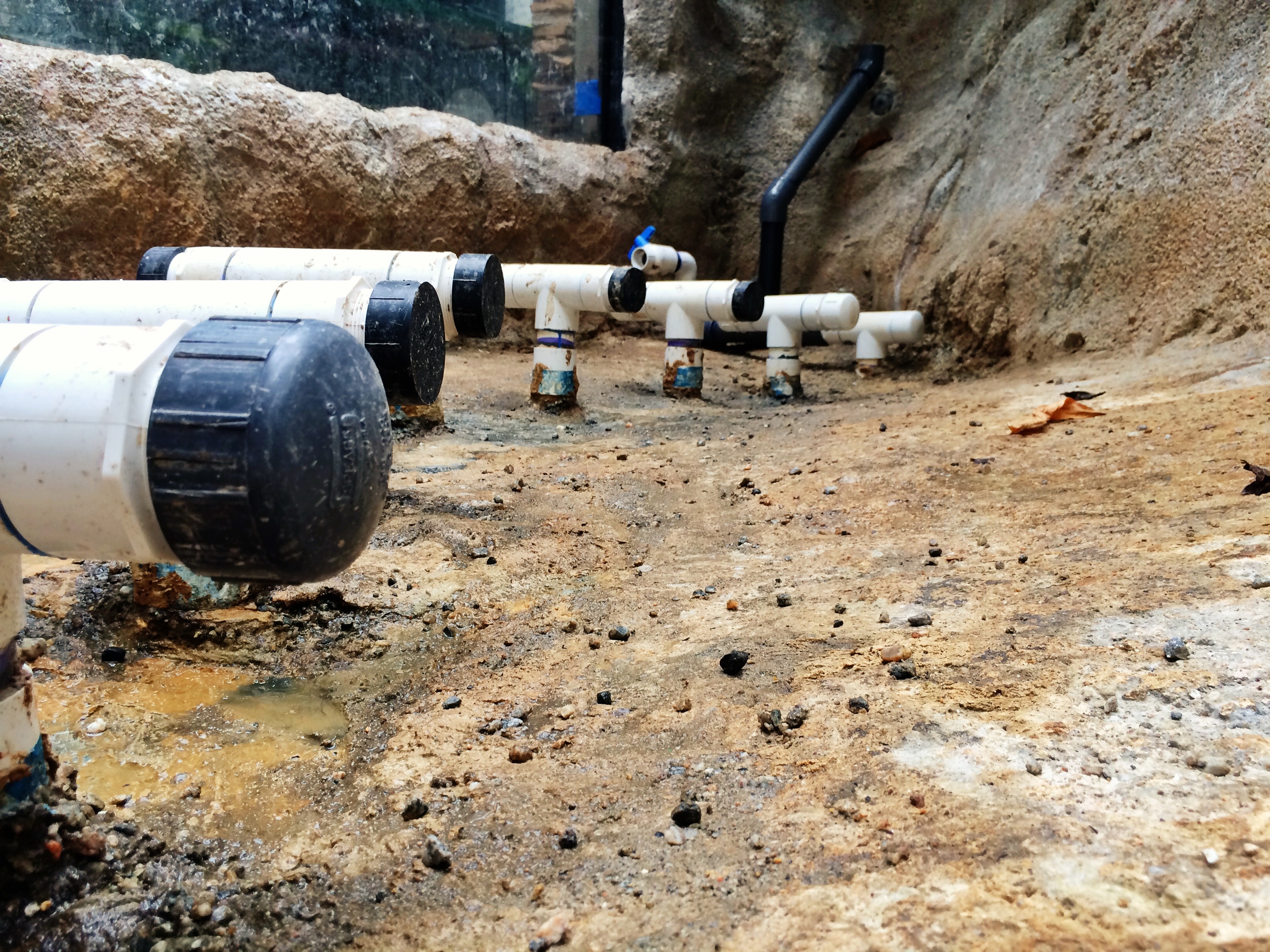
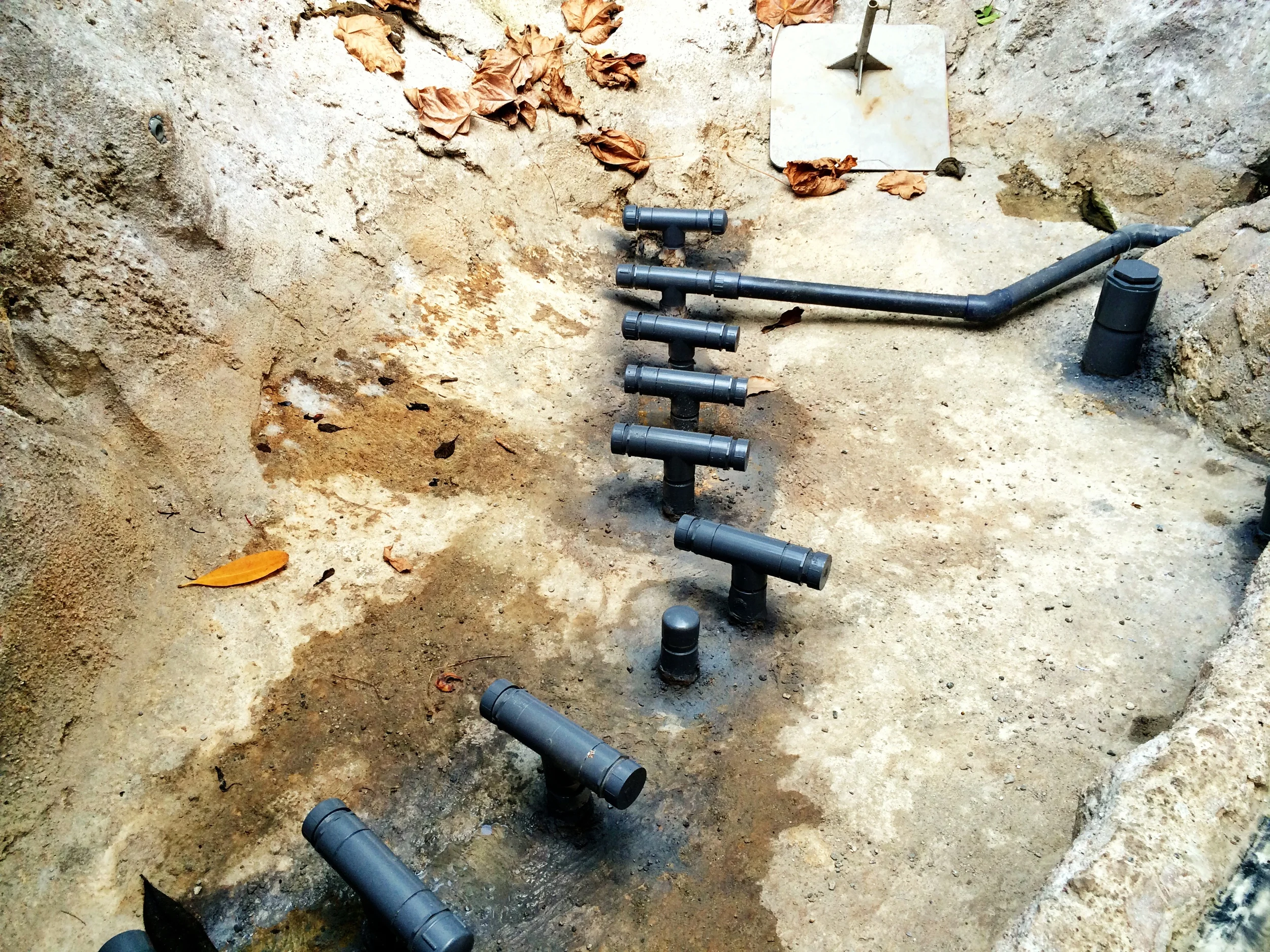
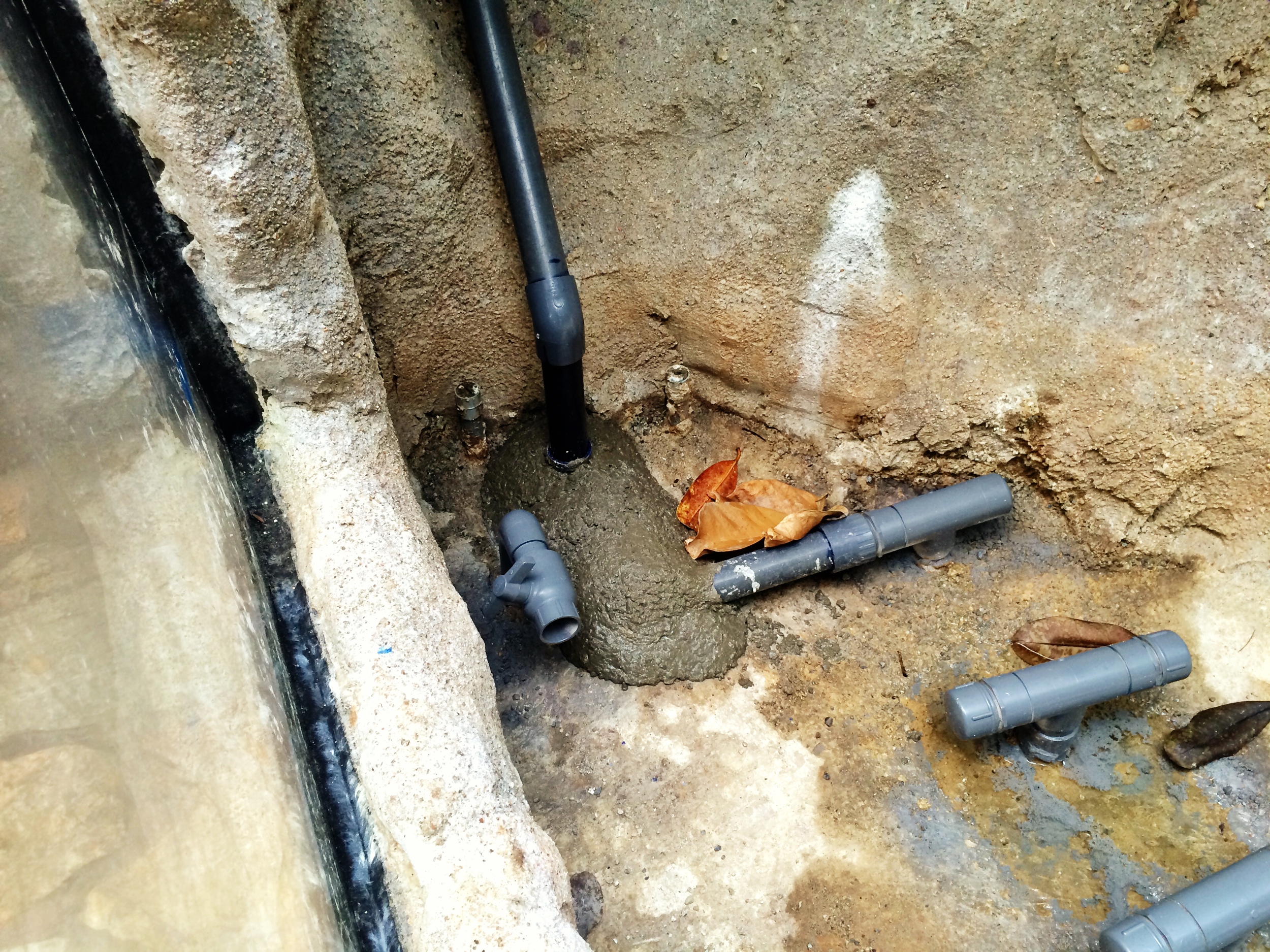
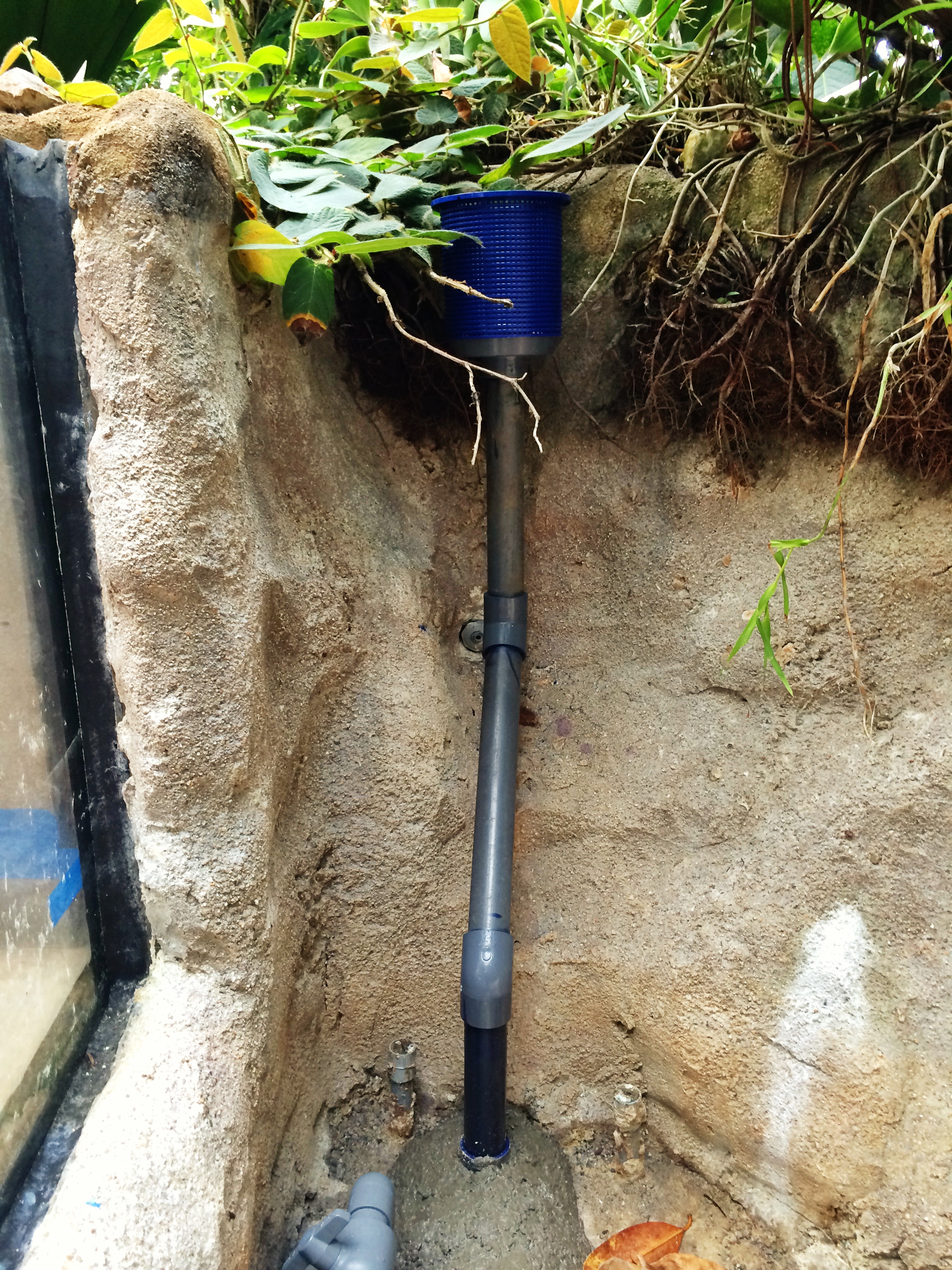
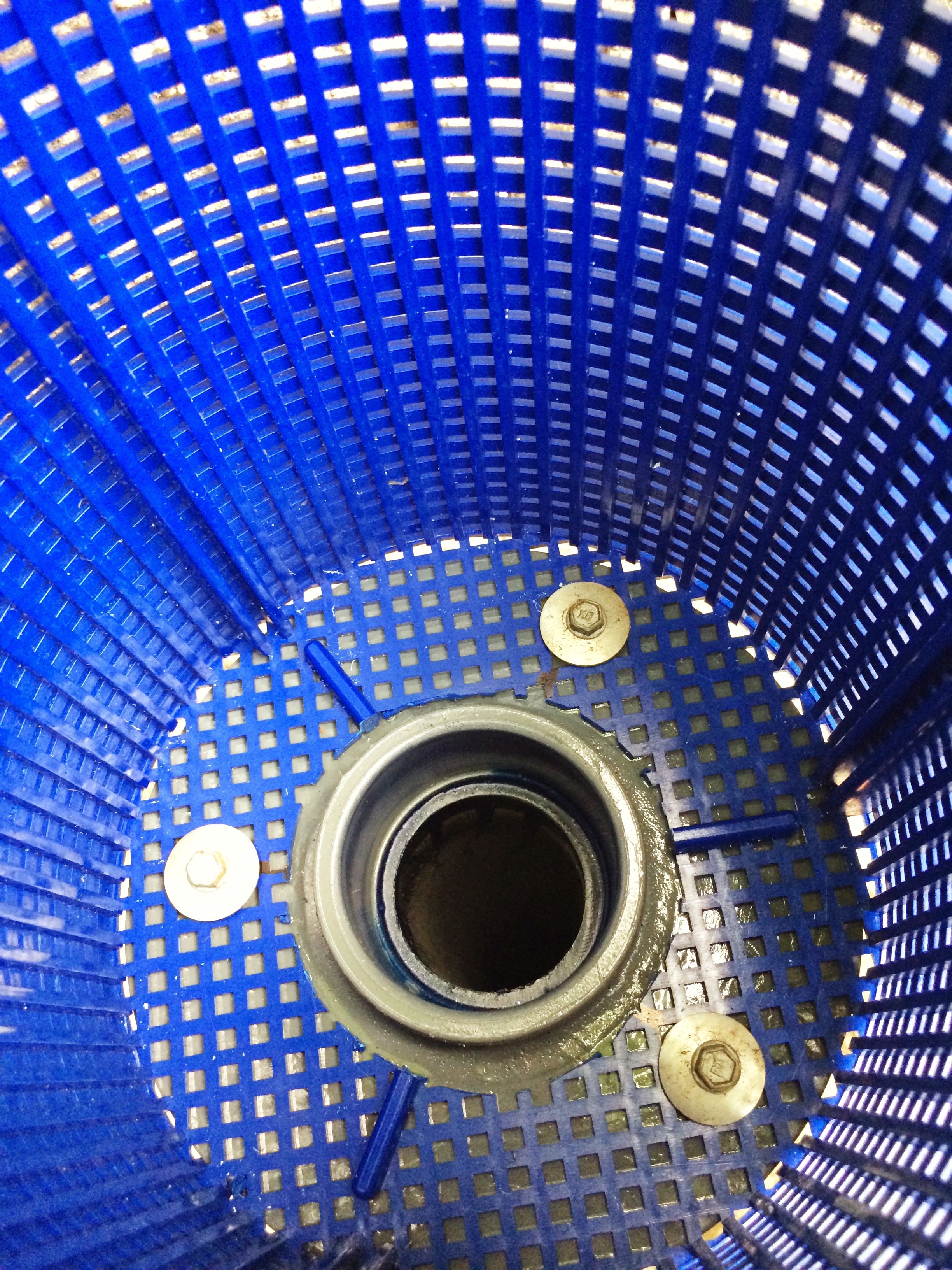
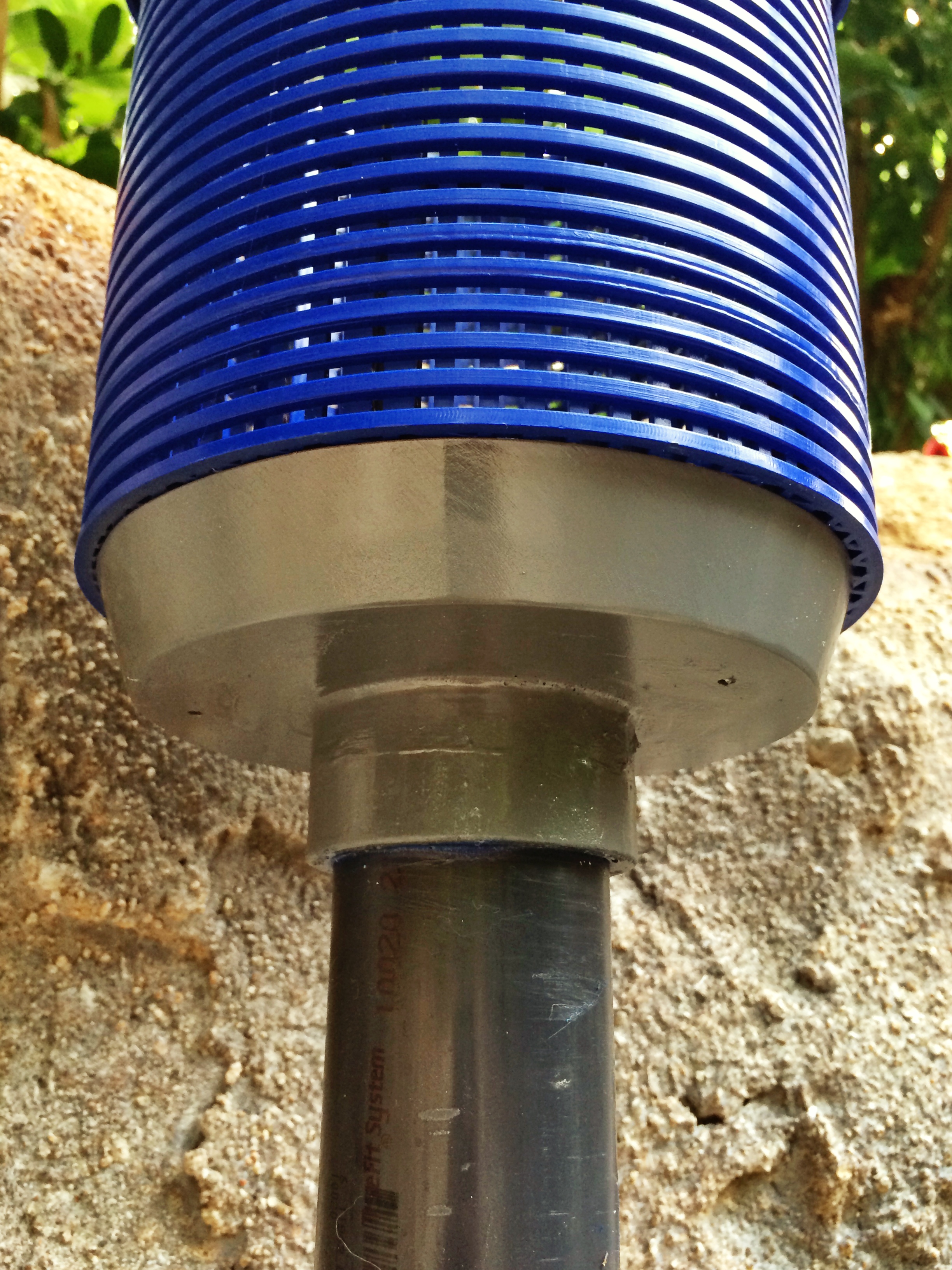
The network of pipe was painted for aesthetic reasons to stay hidden or at least go unnoticed if they were ever uncovered. Schedule 80 PVC was used to route the new filter feeds for more rigidity and to withstand the force and abuse of hundreds of pounds of substrate, rock, and wood that would potentially be resting upon it. Two filter feeds were to be installed in order to draw water from different areas of the pond due to its large volume, to ultimately improve water quality. The filter feeds were constructed from baskets and adapted with a custom made PVC flange. The baskets are attached with stainless steel bolts for ease of removal for maintenance purposes. The filter feeds were then leveled to the exact same height and cemented in place to ensure that both baskets would be effectively utilized.
The height of the filter feed was carefully chosen to maximize the operating water height, and to ensure the pond does not exceed it’s emergency overflow. With the transition from an under gravel filtration to one that draws water from the surface, the display will always look filled and maintained. This filtration method also acts as a surface skimmer, aiding in the removal of dirt and film that accumulates at the water surface.
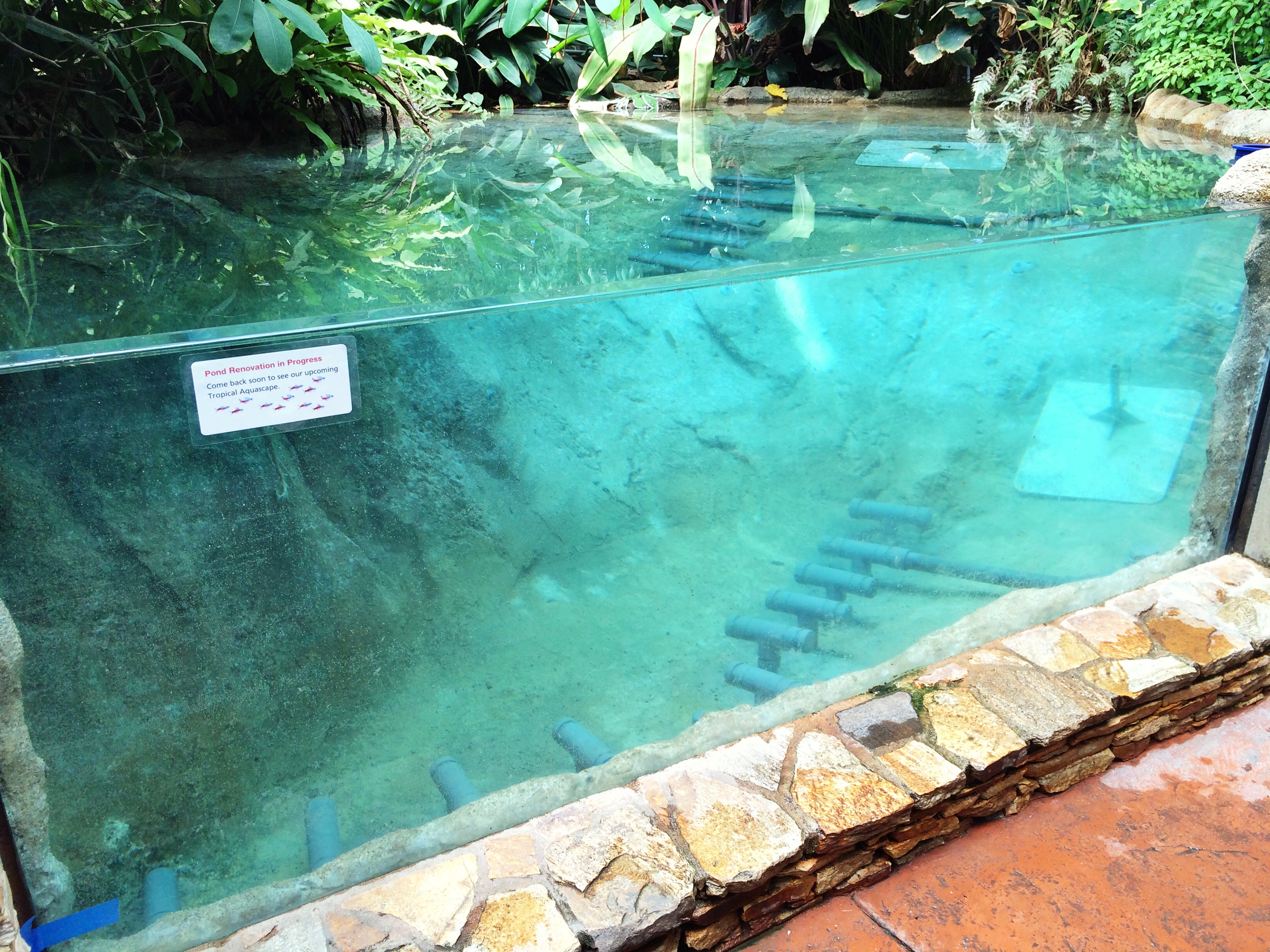
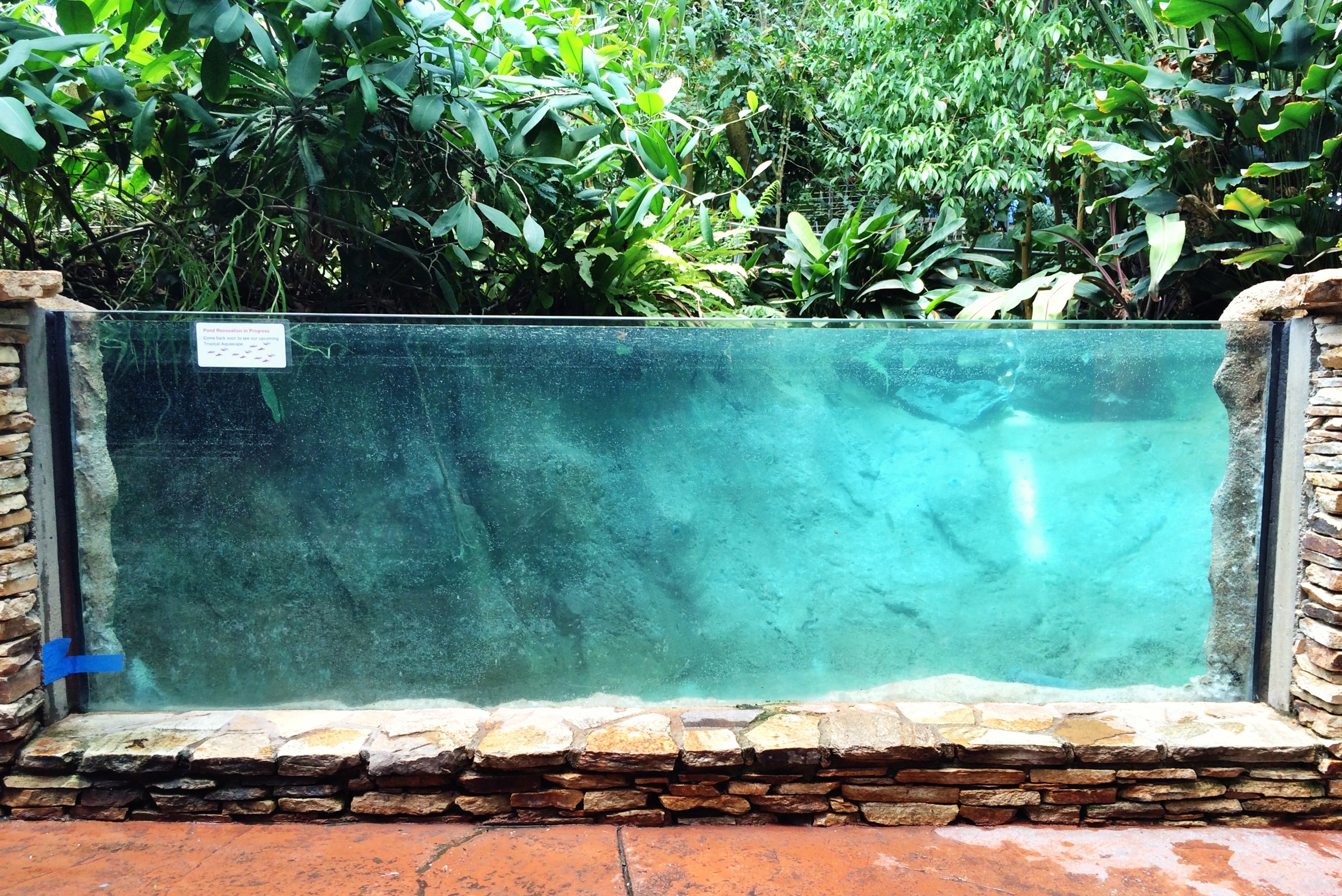
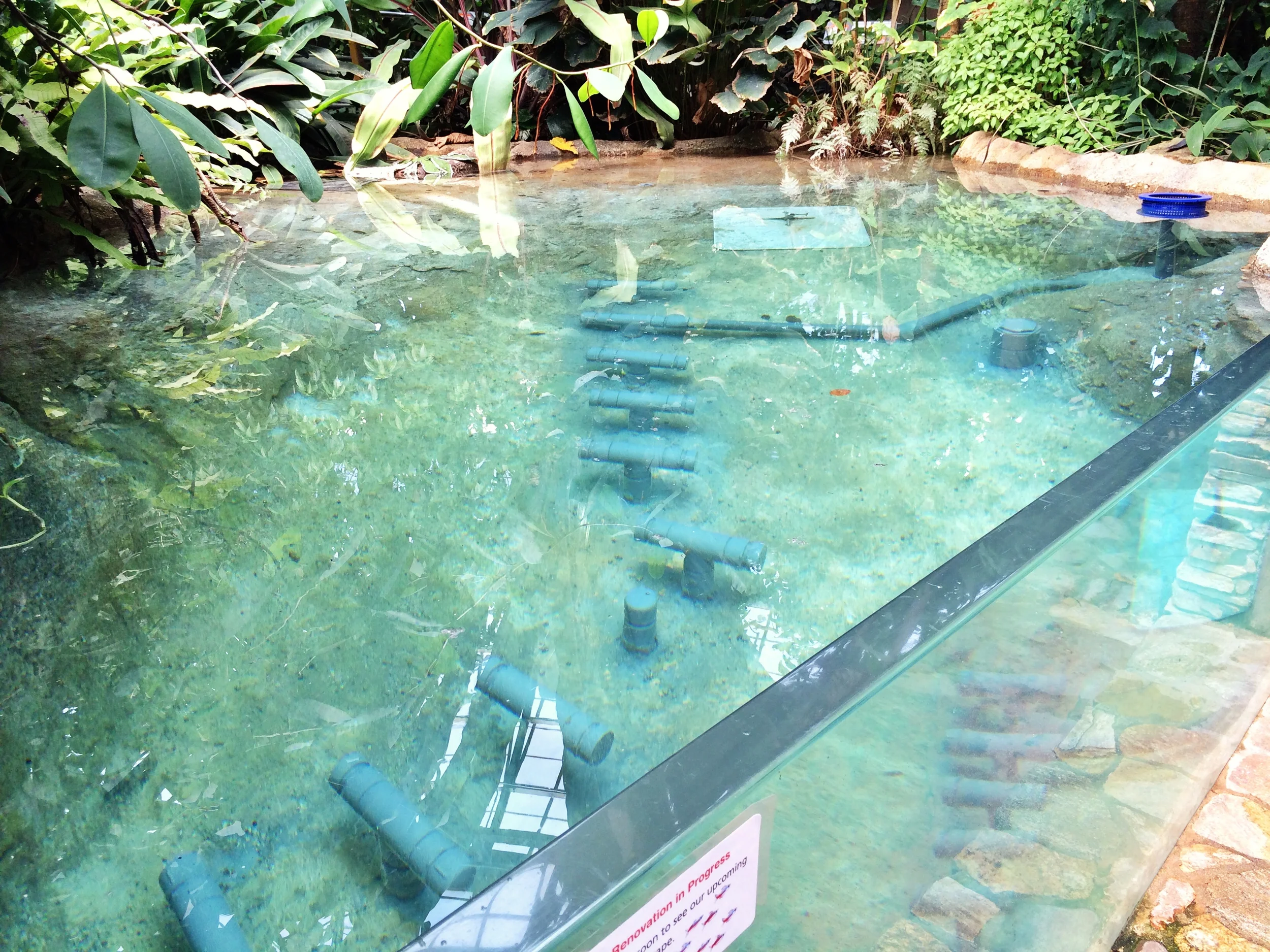
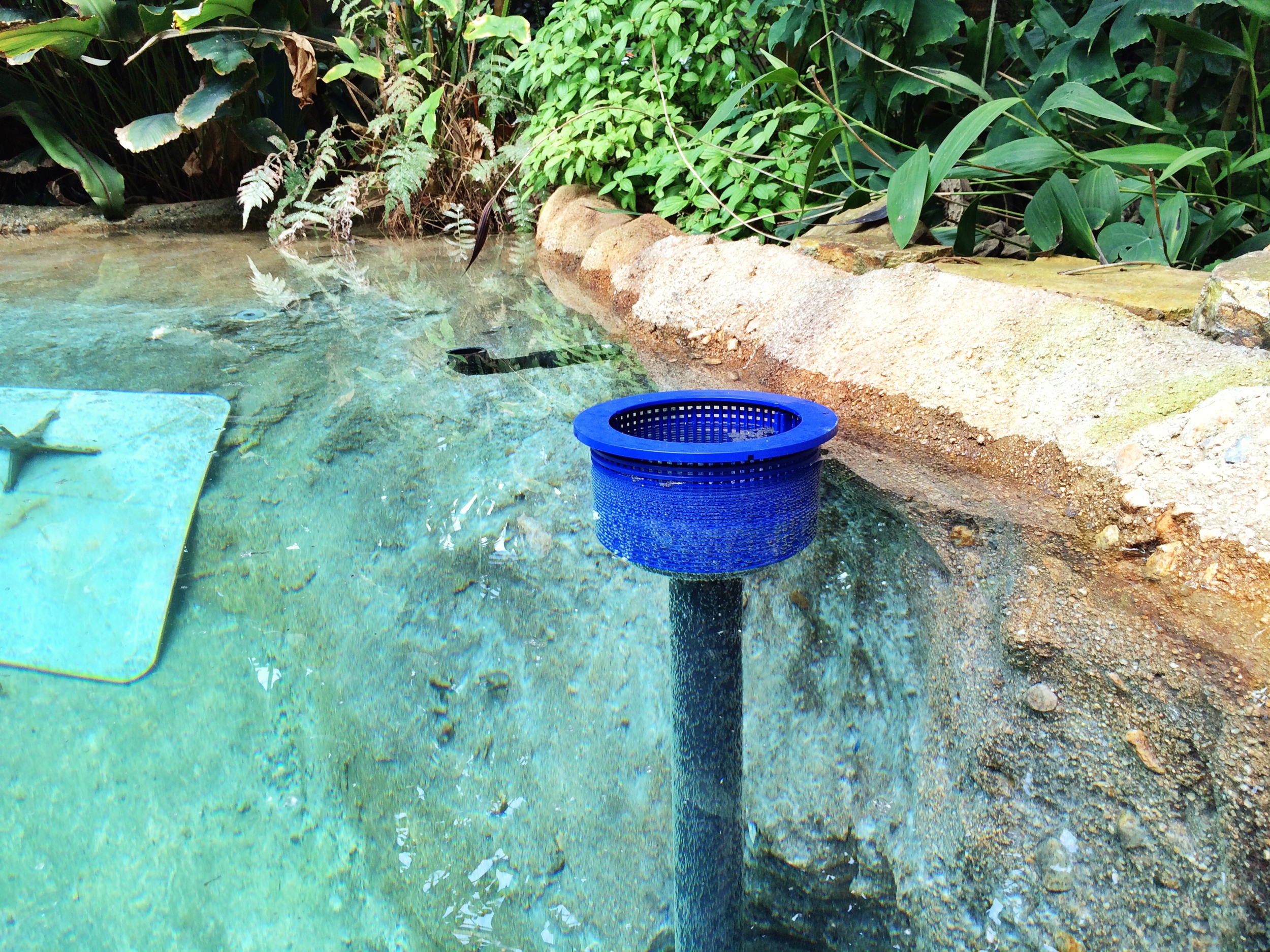
The pond water levels and filter flow rates were tested before going any further in the process. The flow rate of the return pump from the filter to the pond needed to be set at point that maximized the amount of water being filtered without draining all the water from the filter and ultimately cavitating the pump. In other words, the flow rate of water removed from the pond has to be greater than the water being pumped from the filter. This process took a few days as the body of water was large and finding the sweet spot where the filter levels would maintain itself at the desired volume was imperative.

